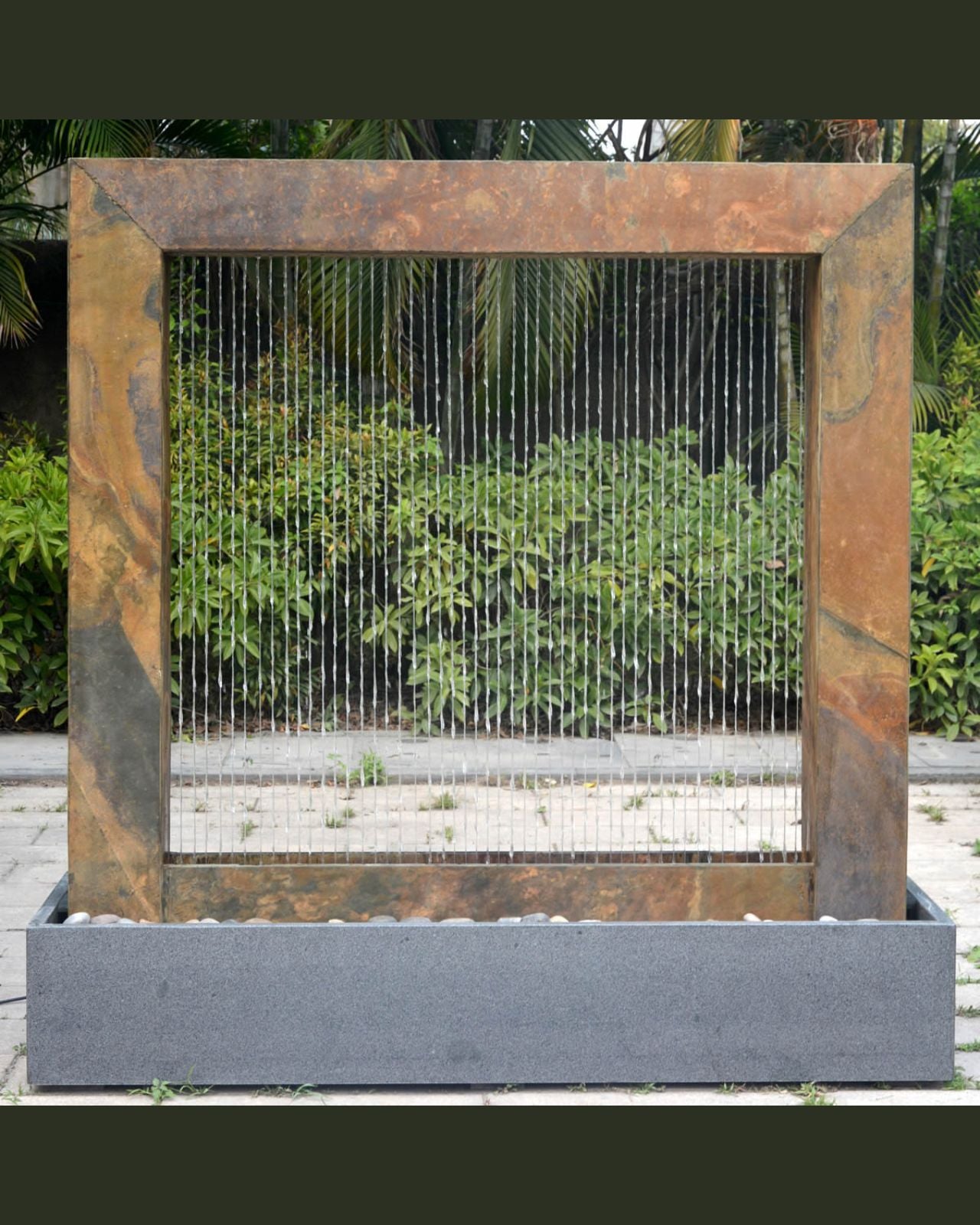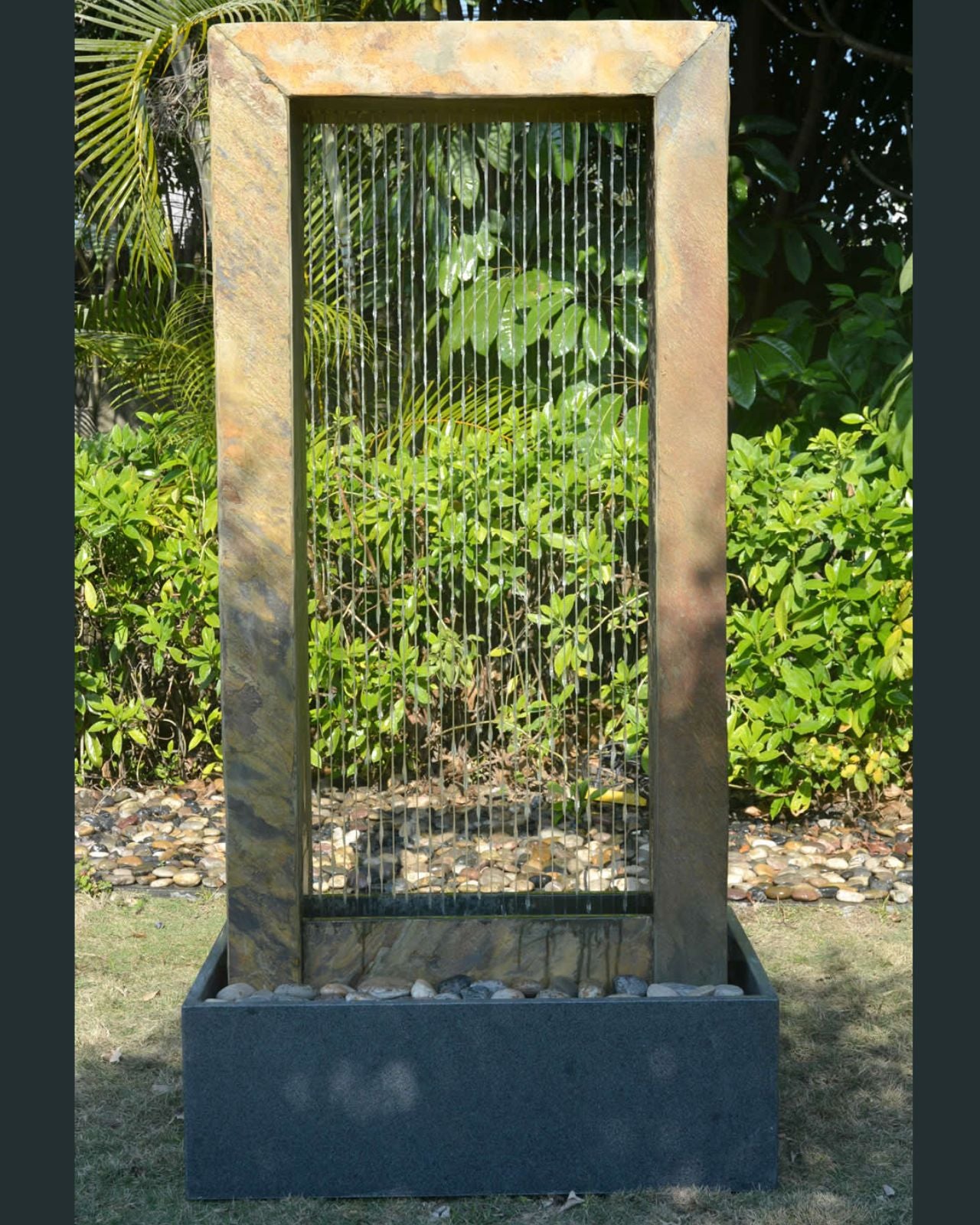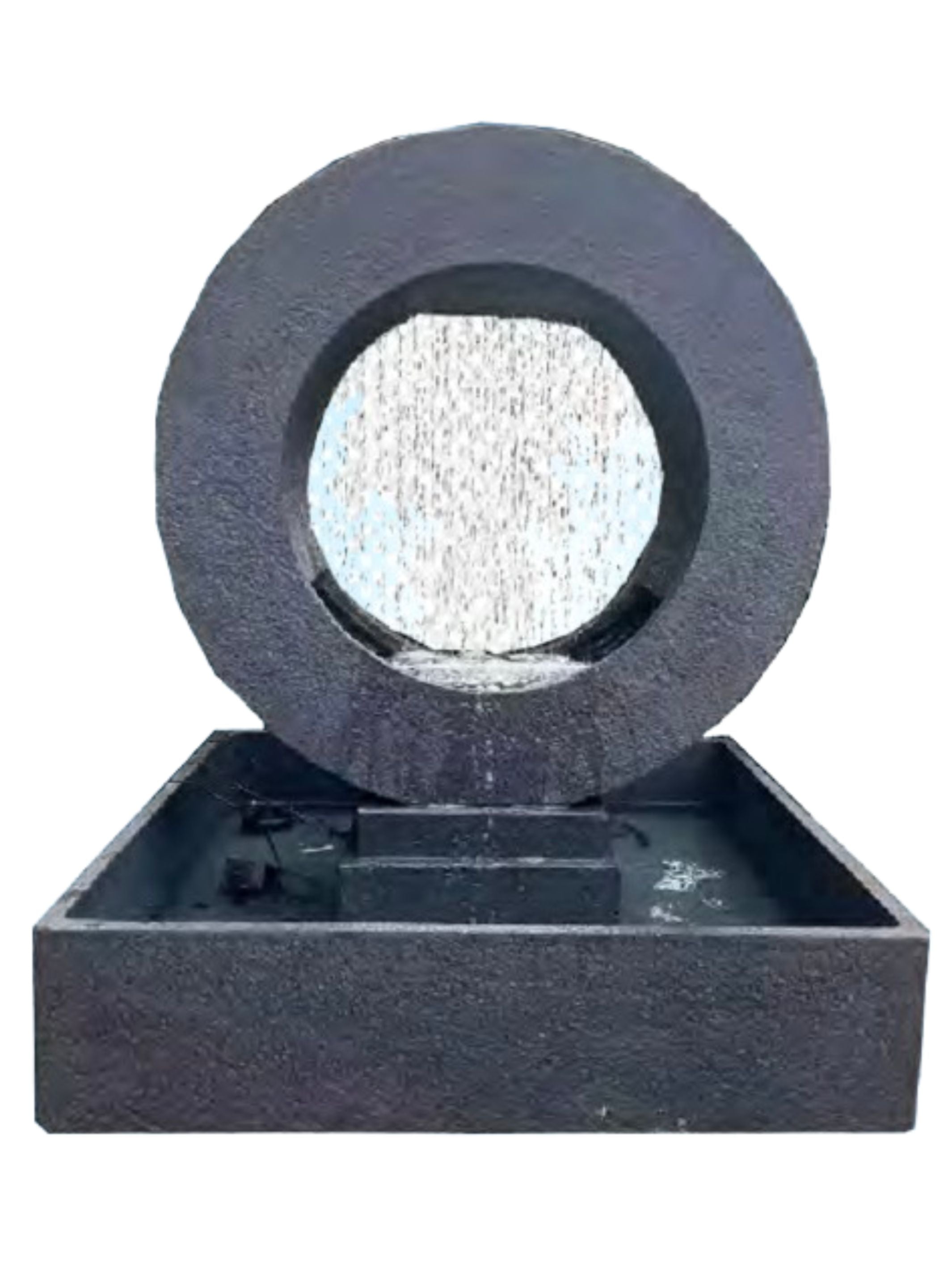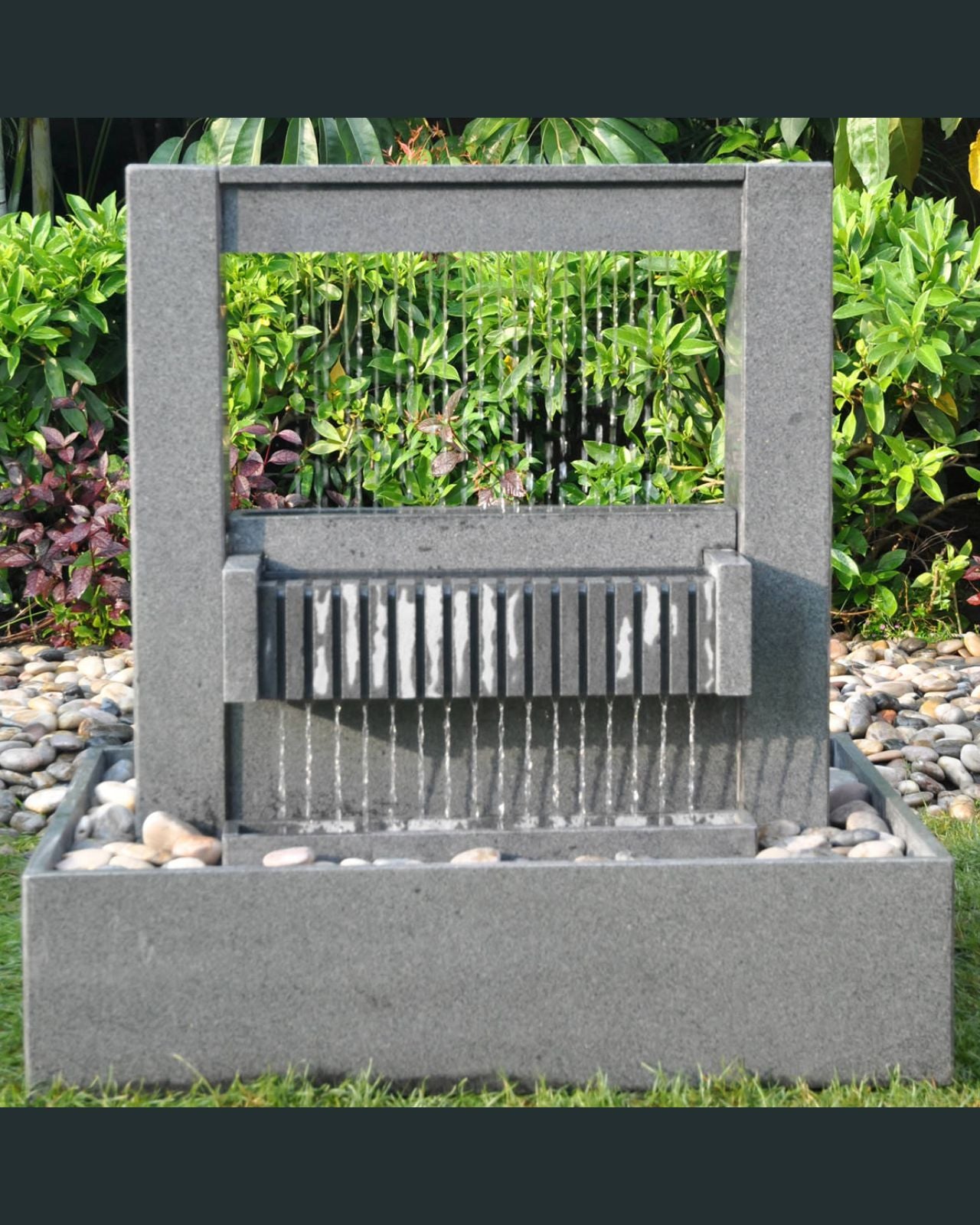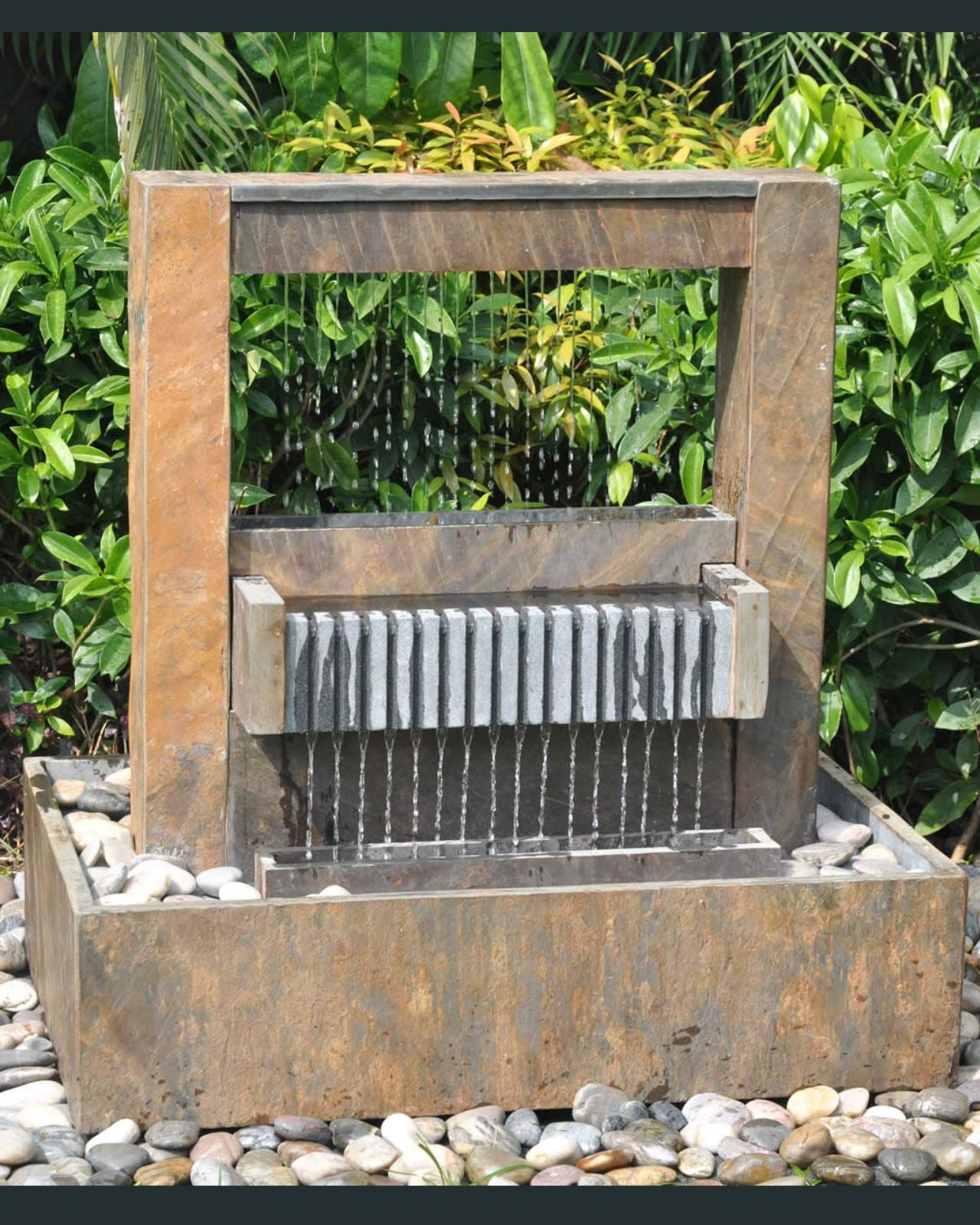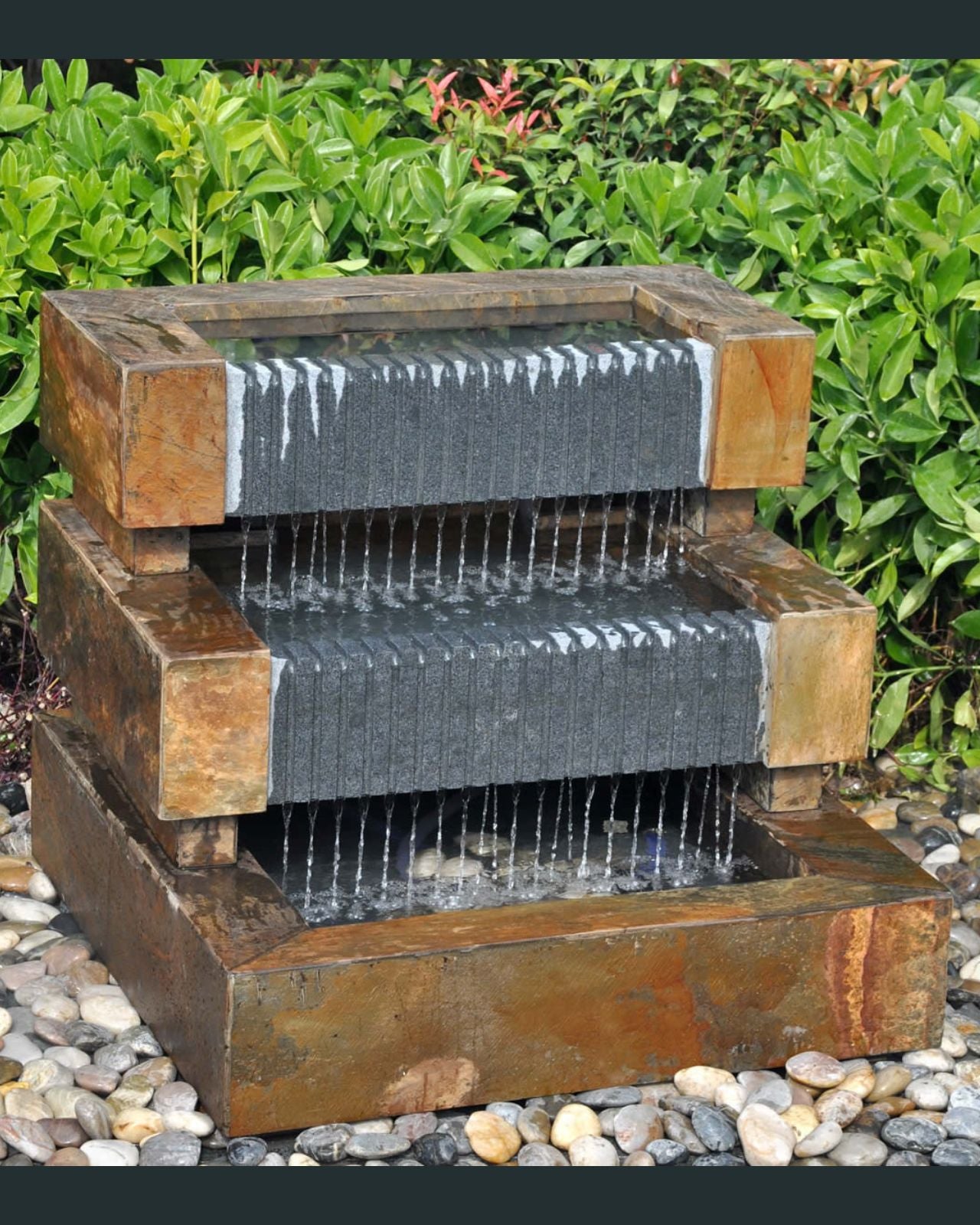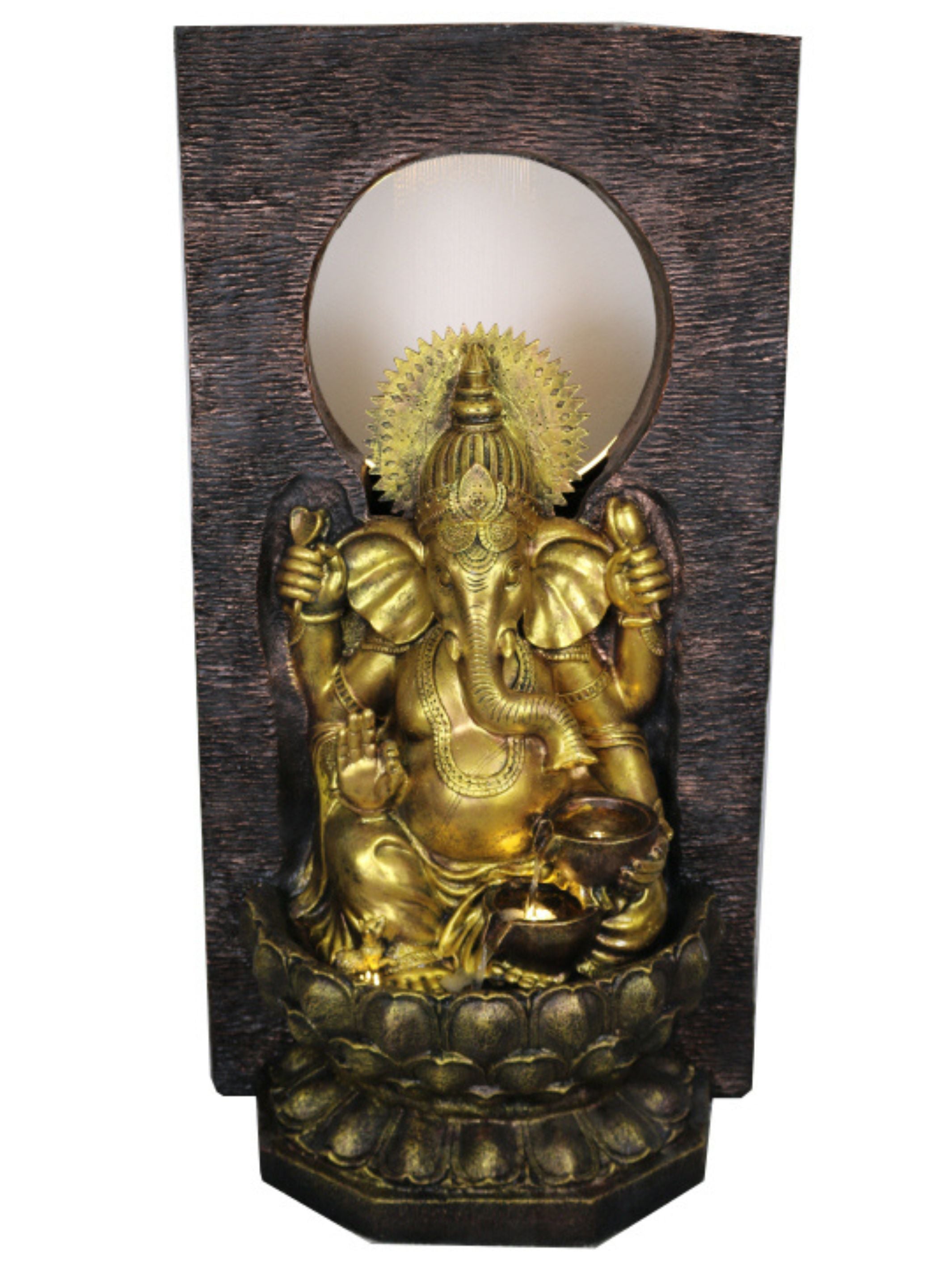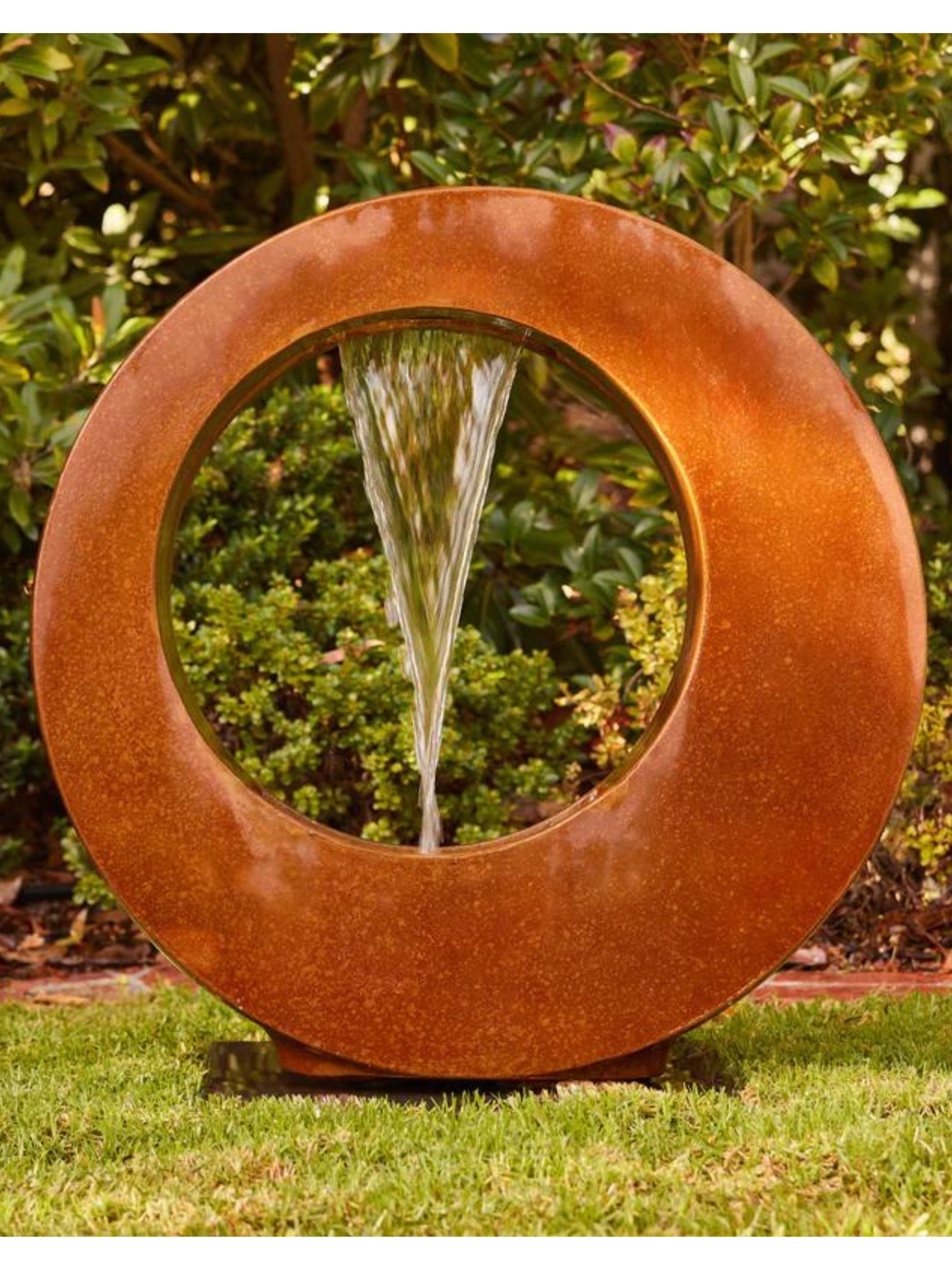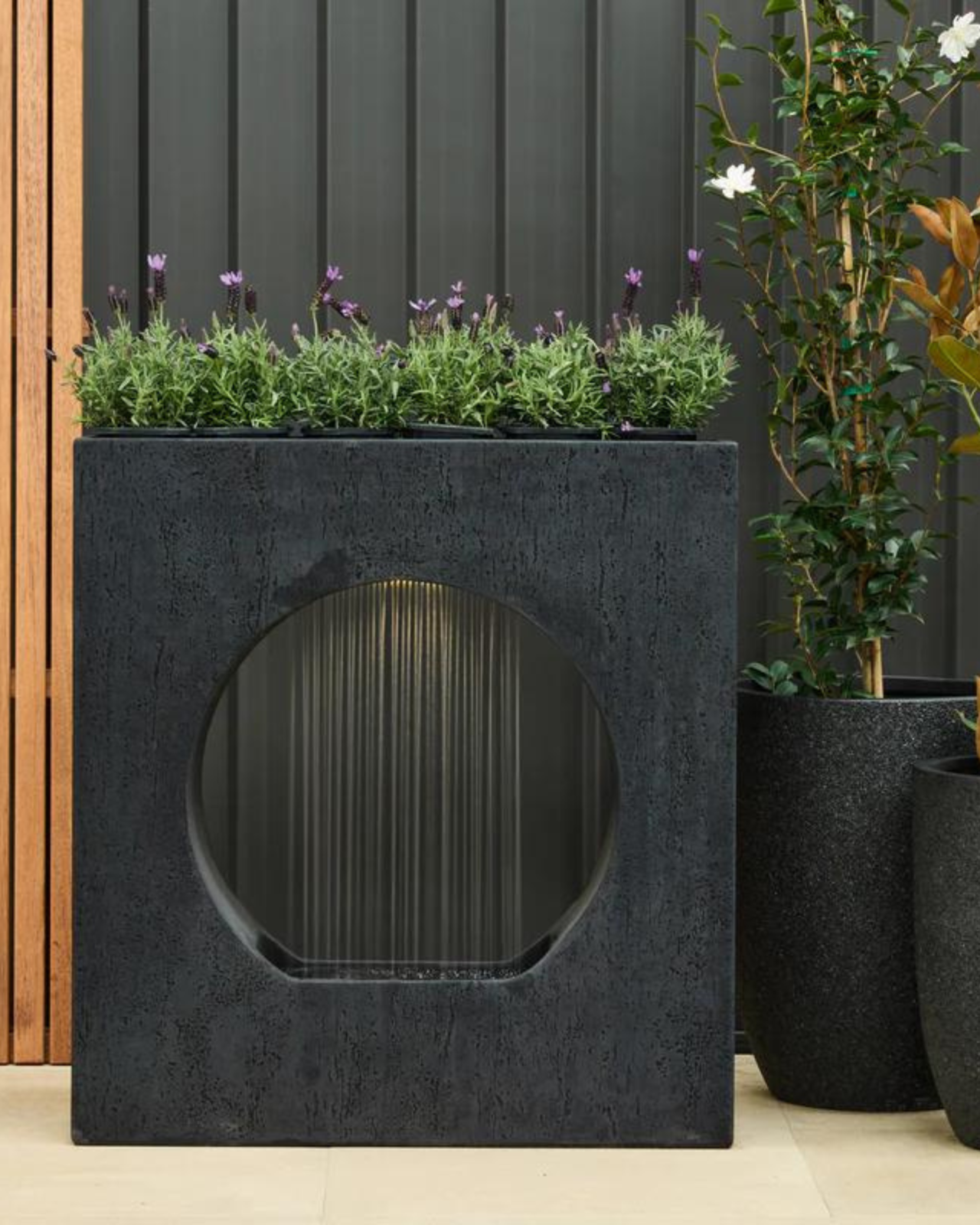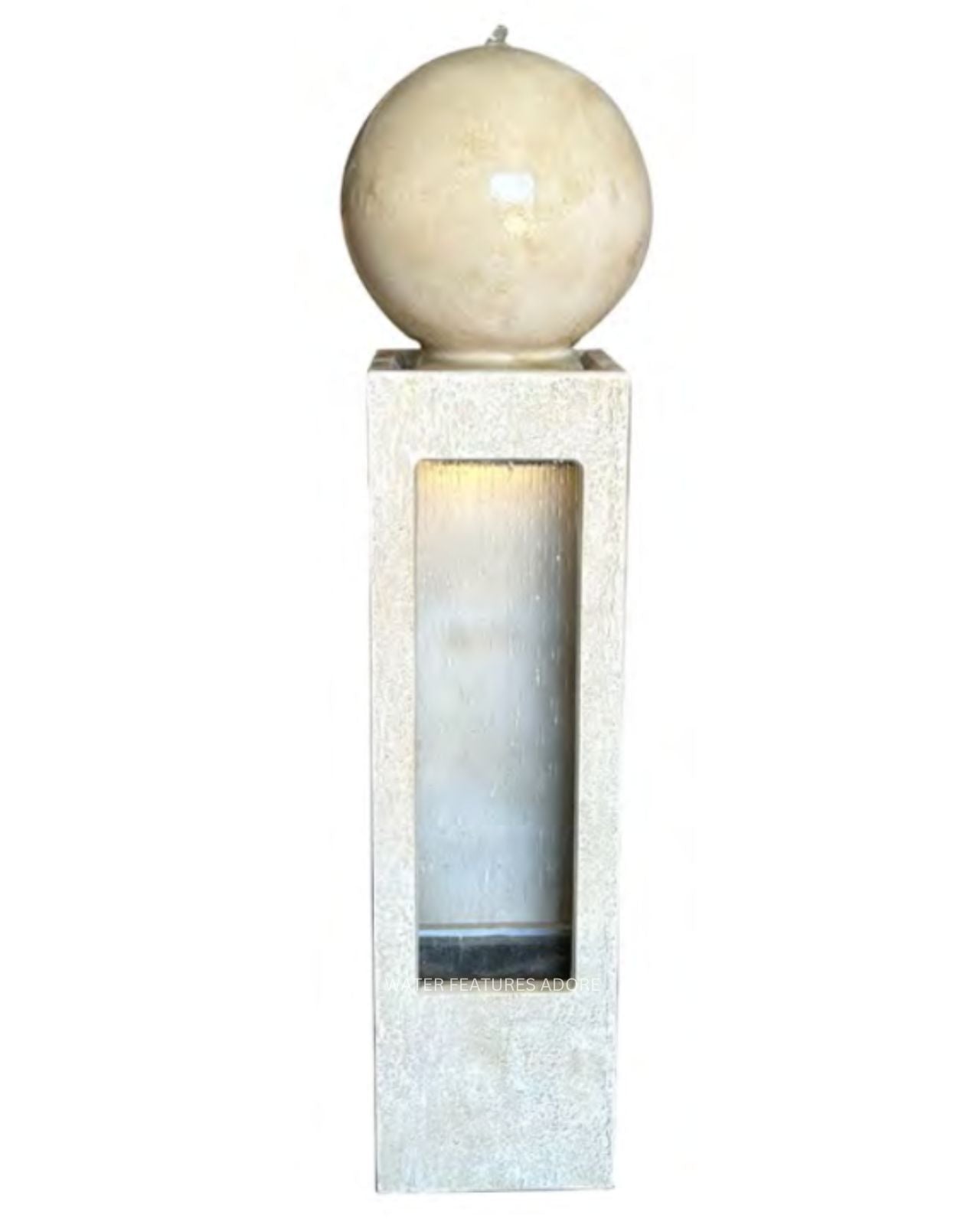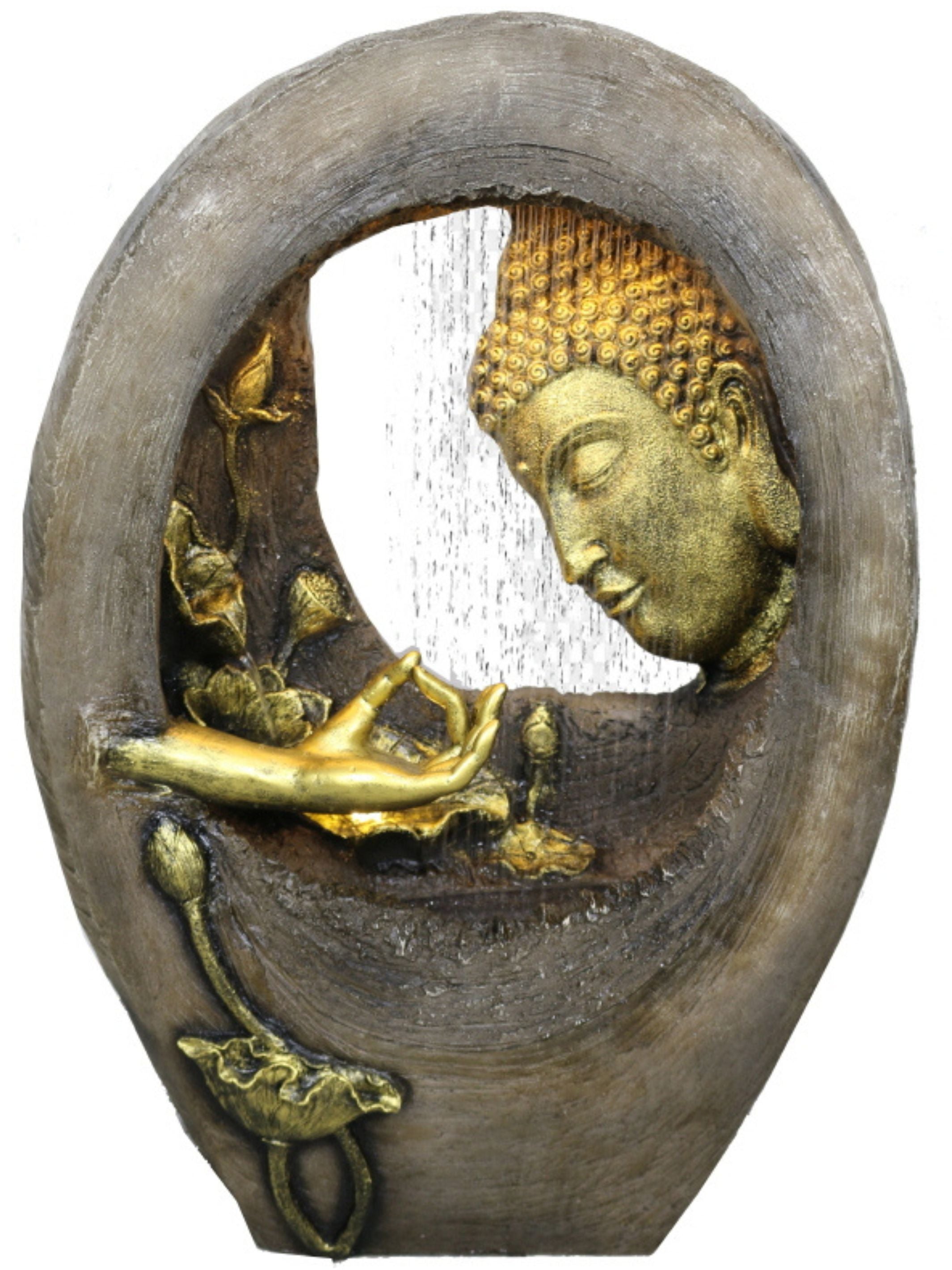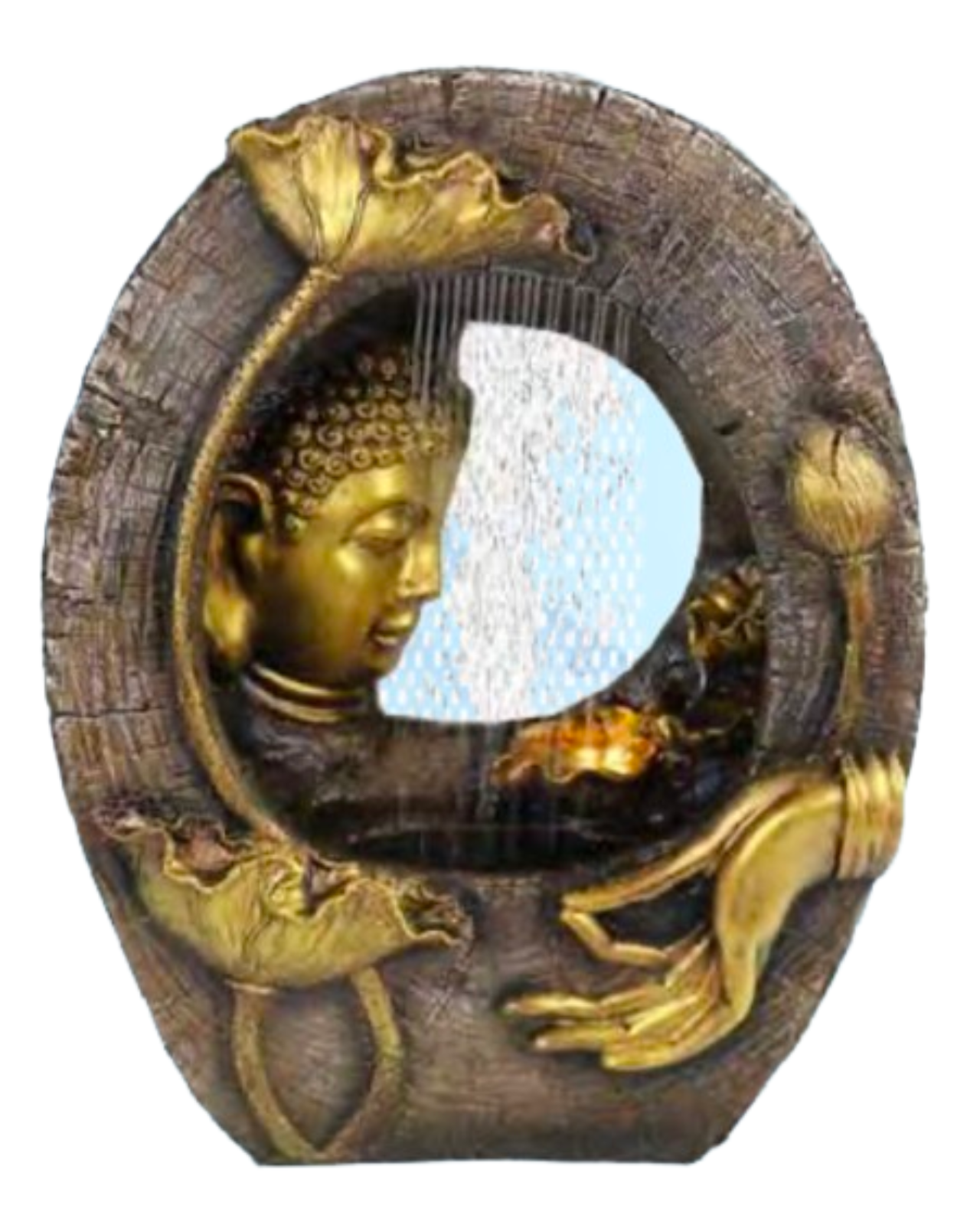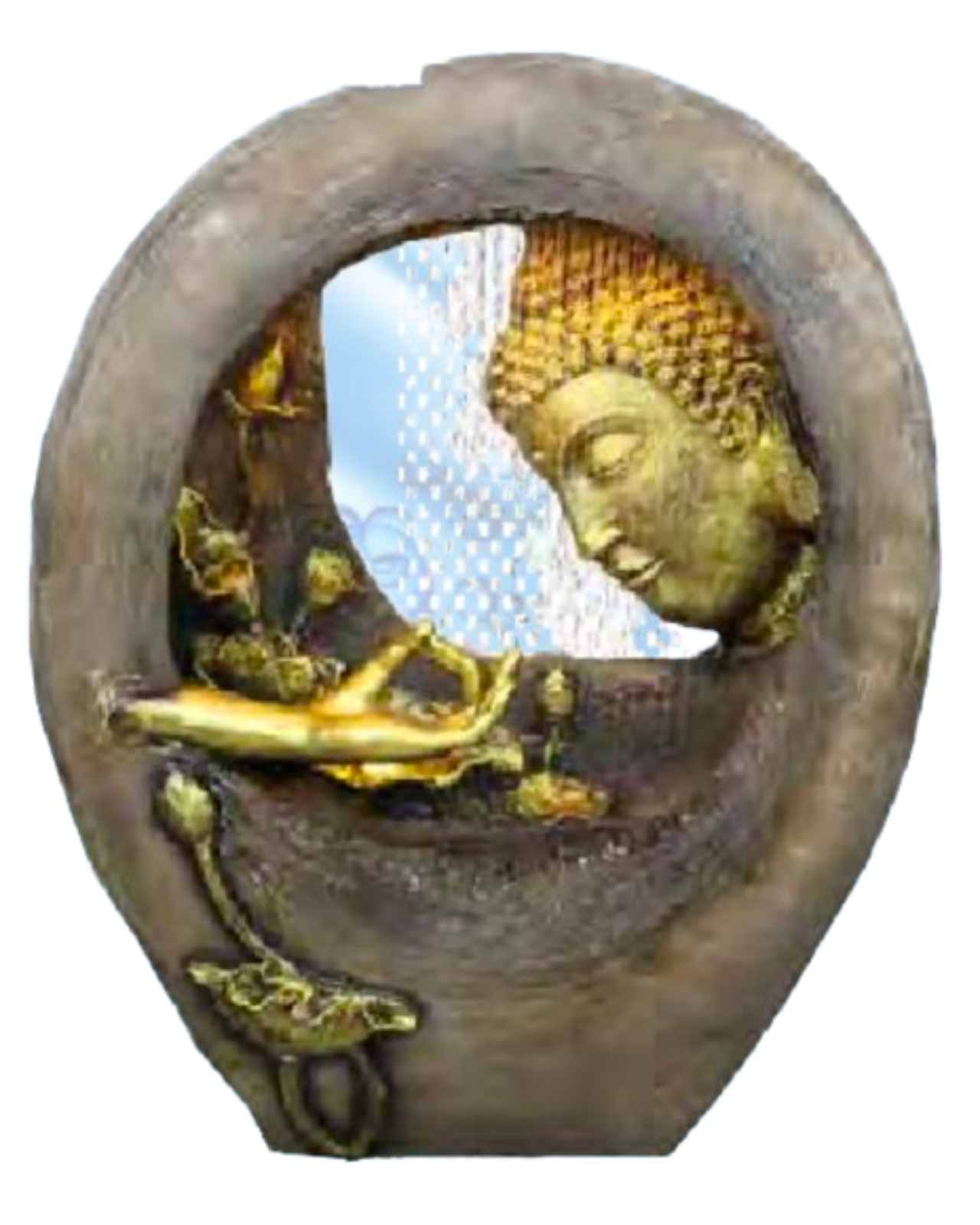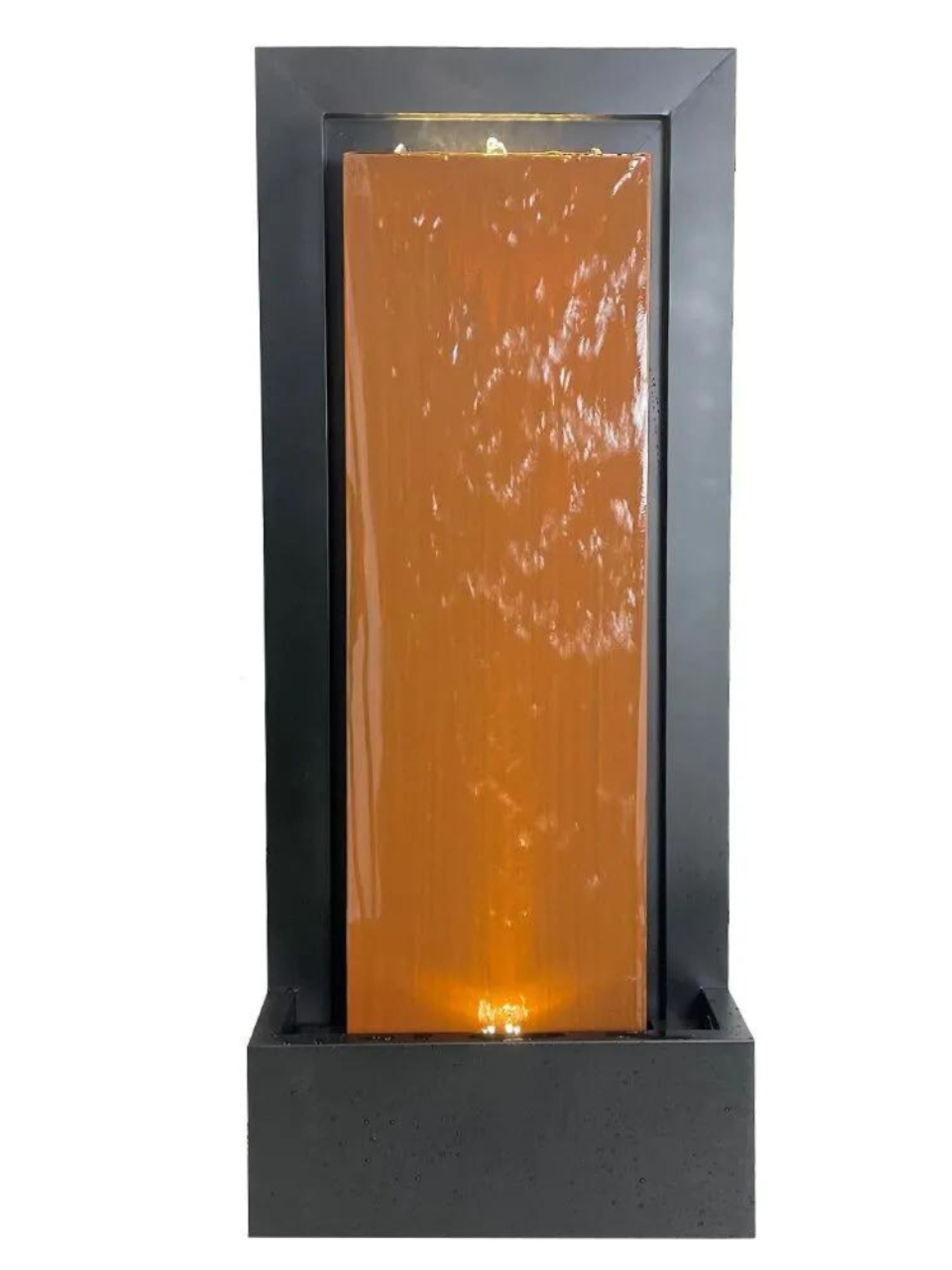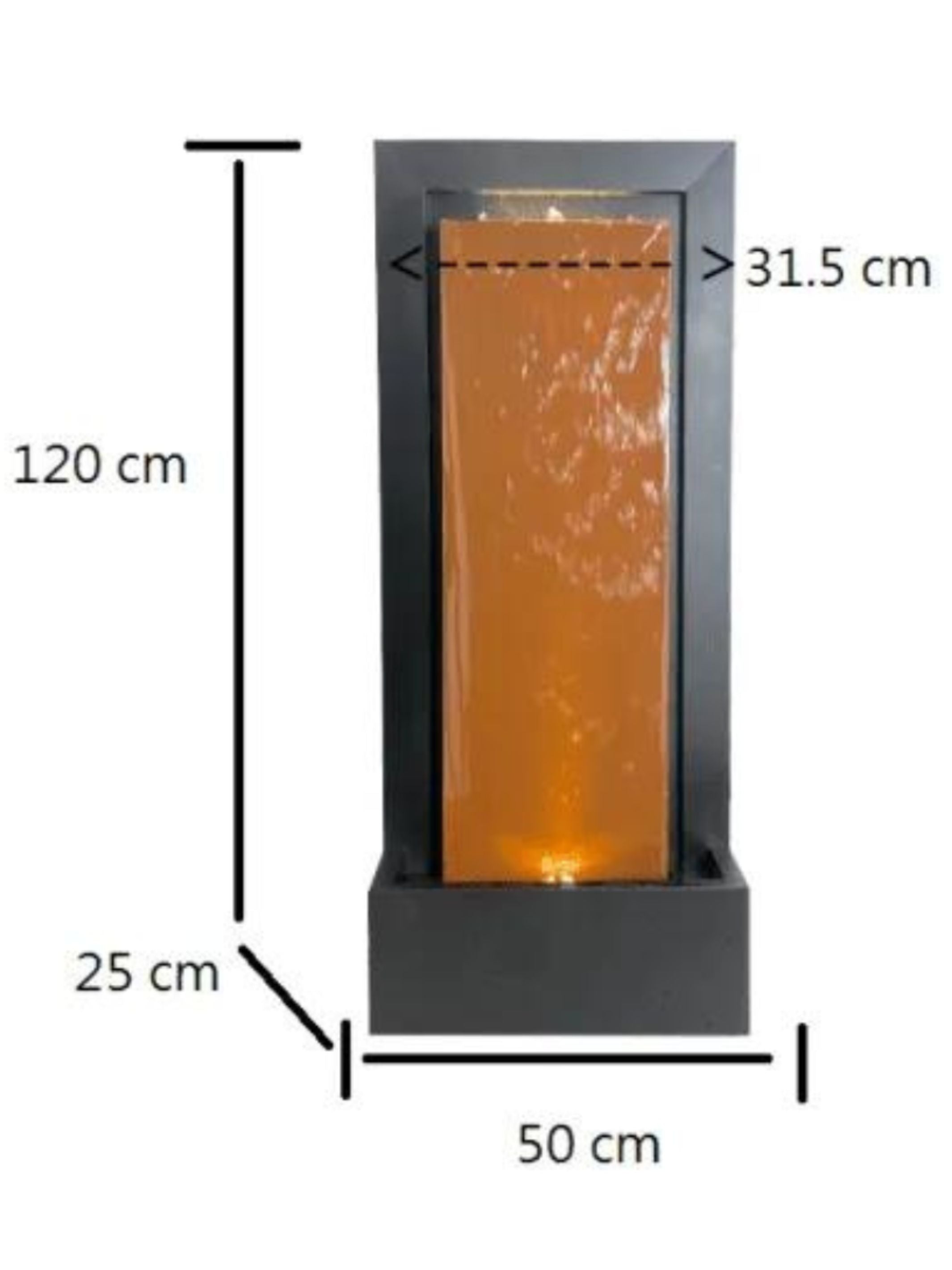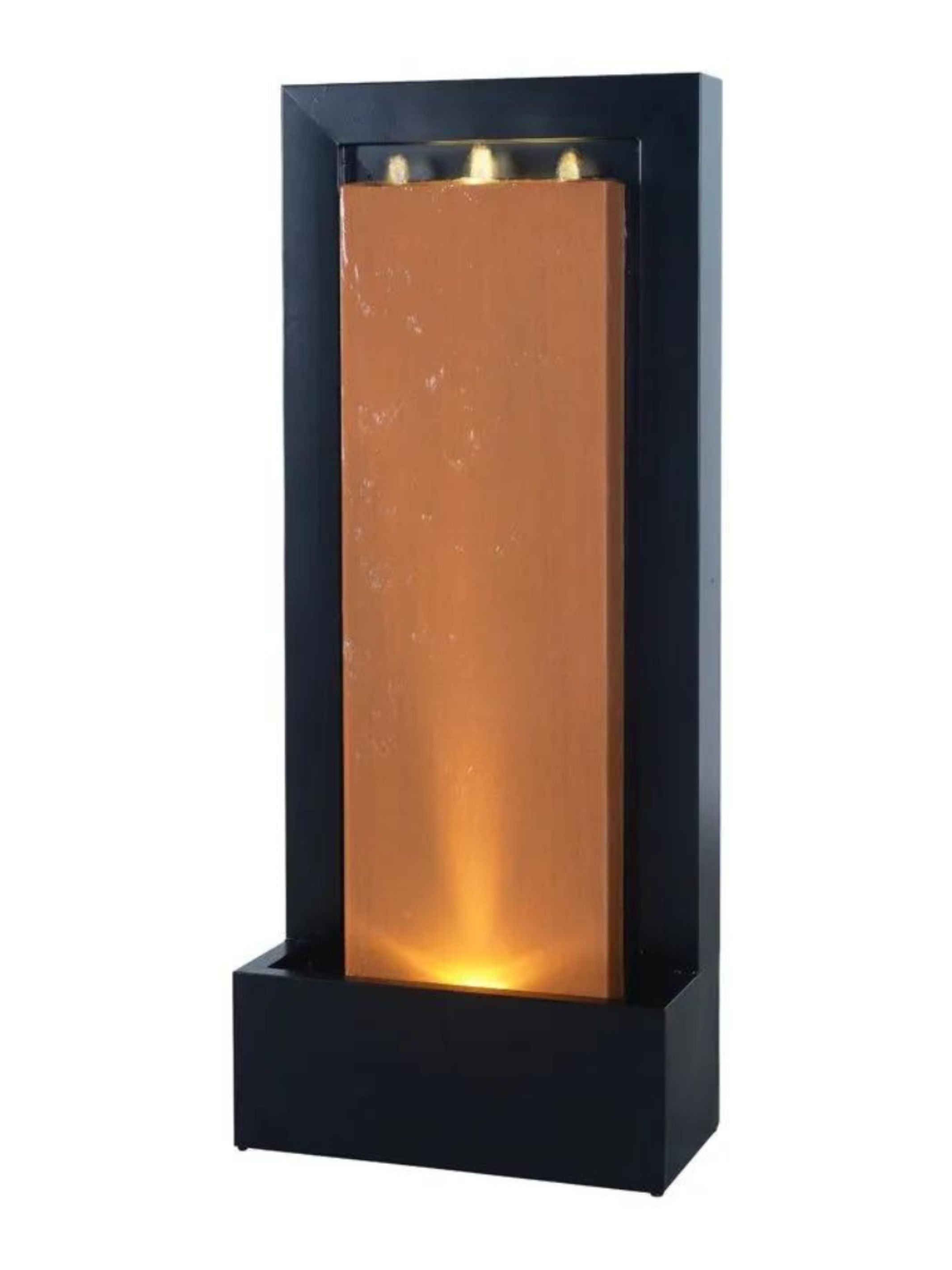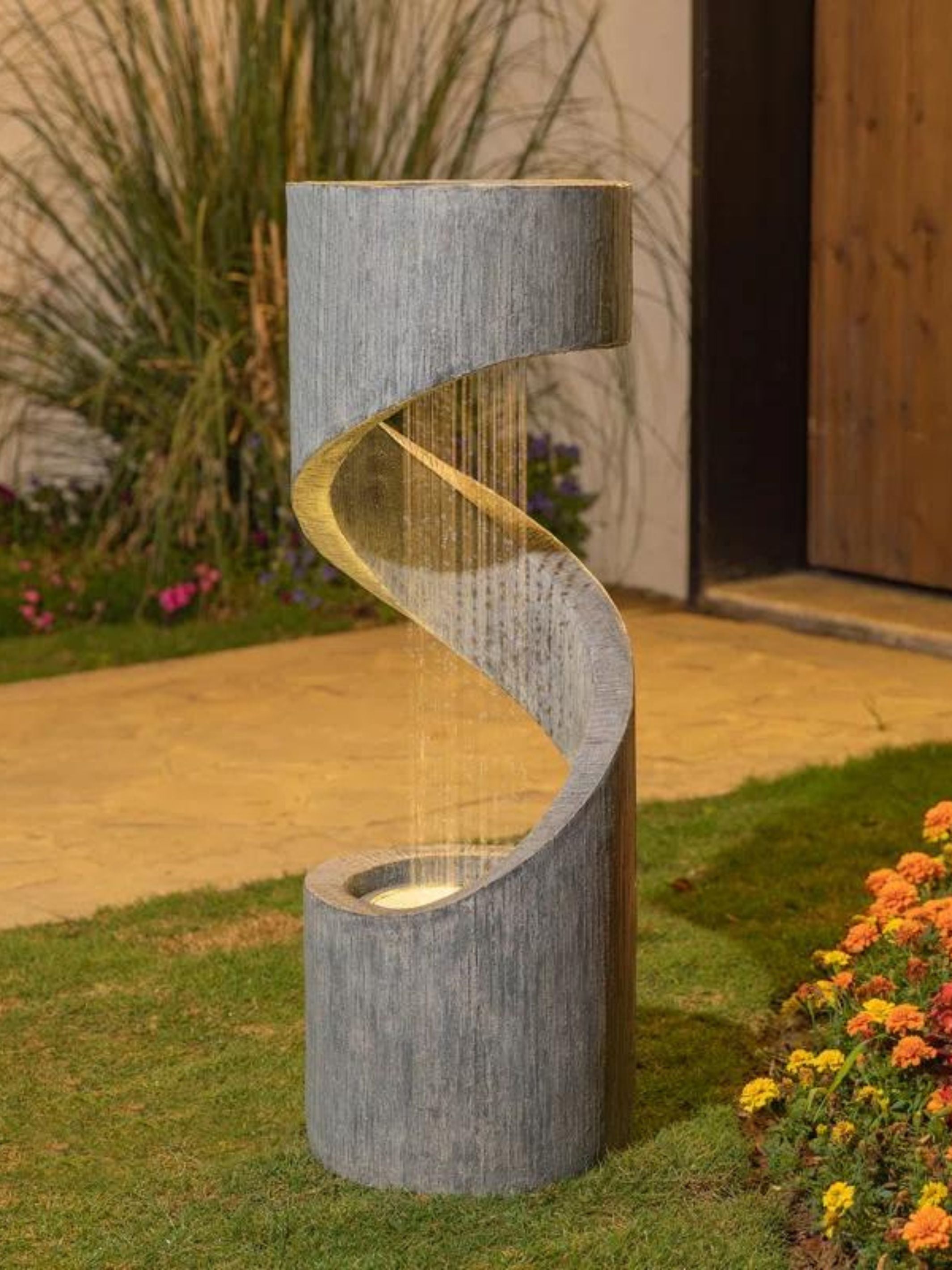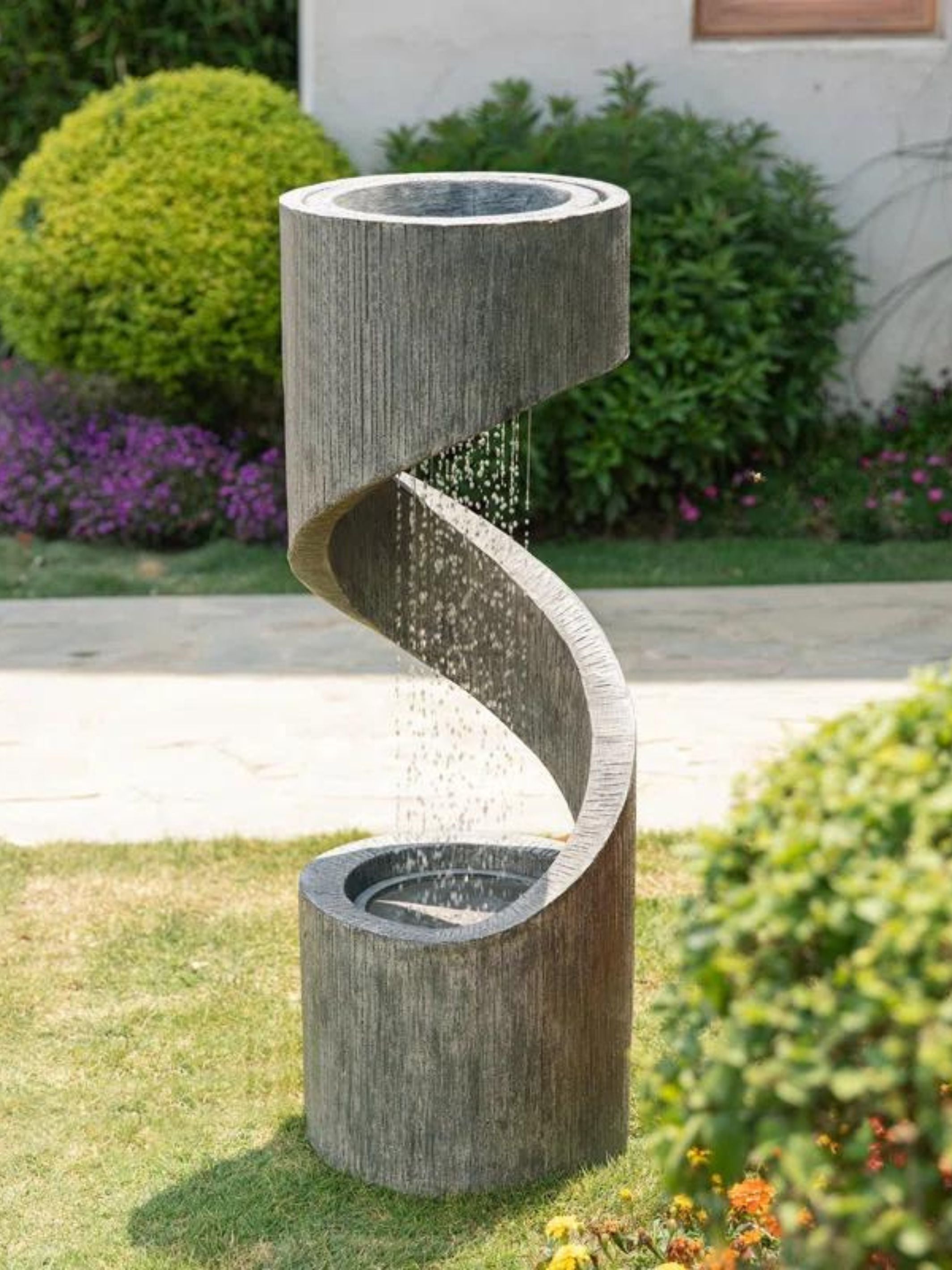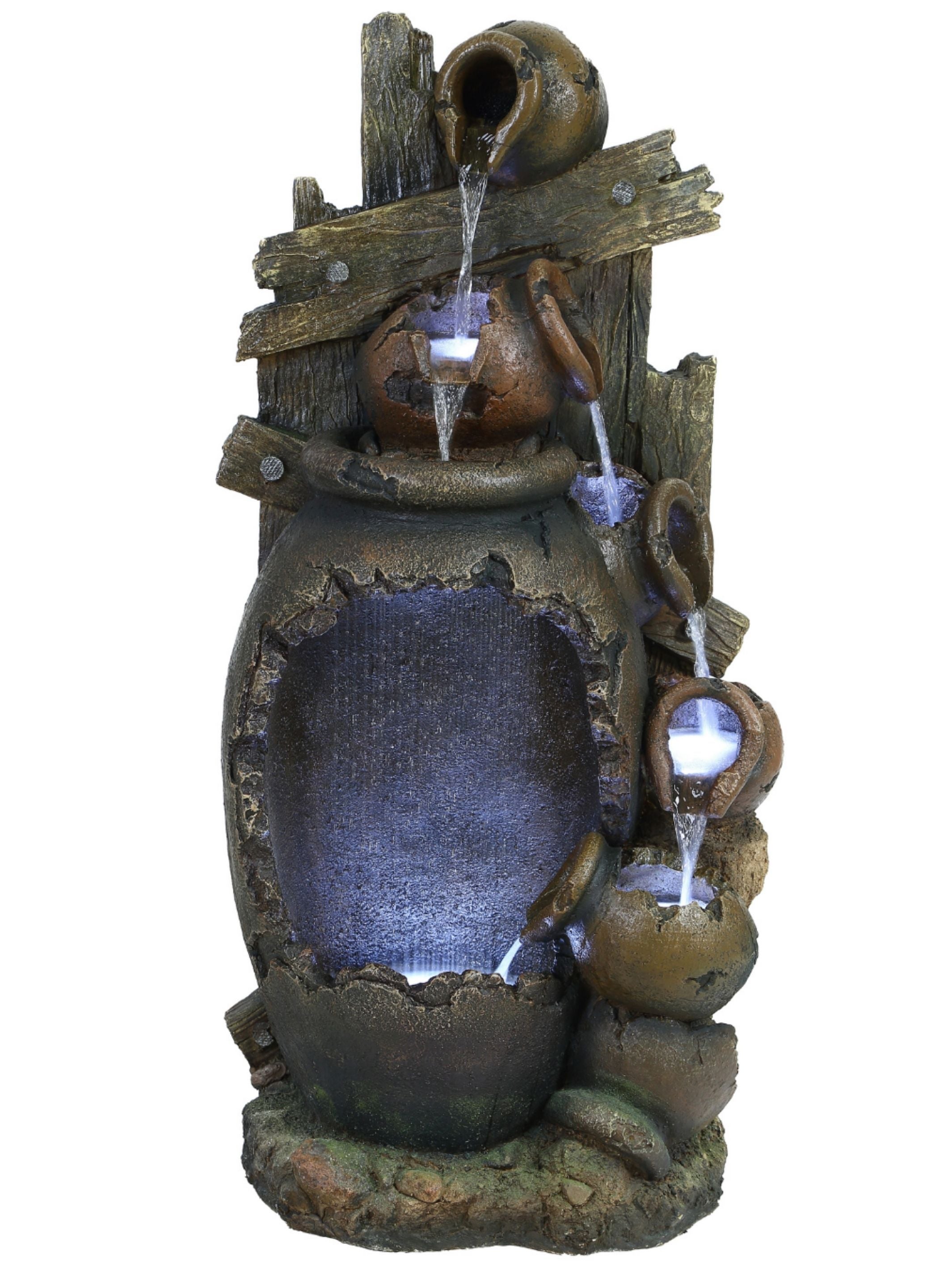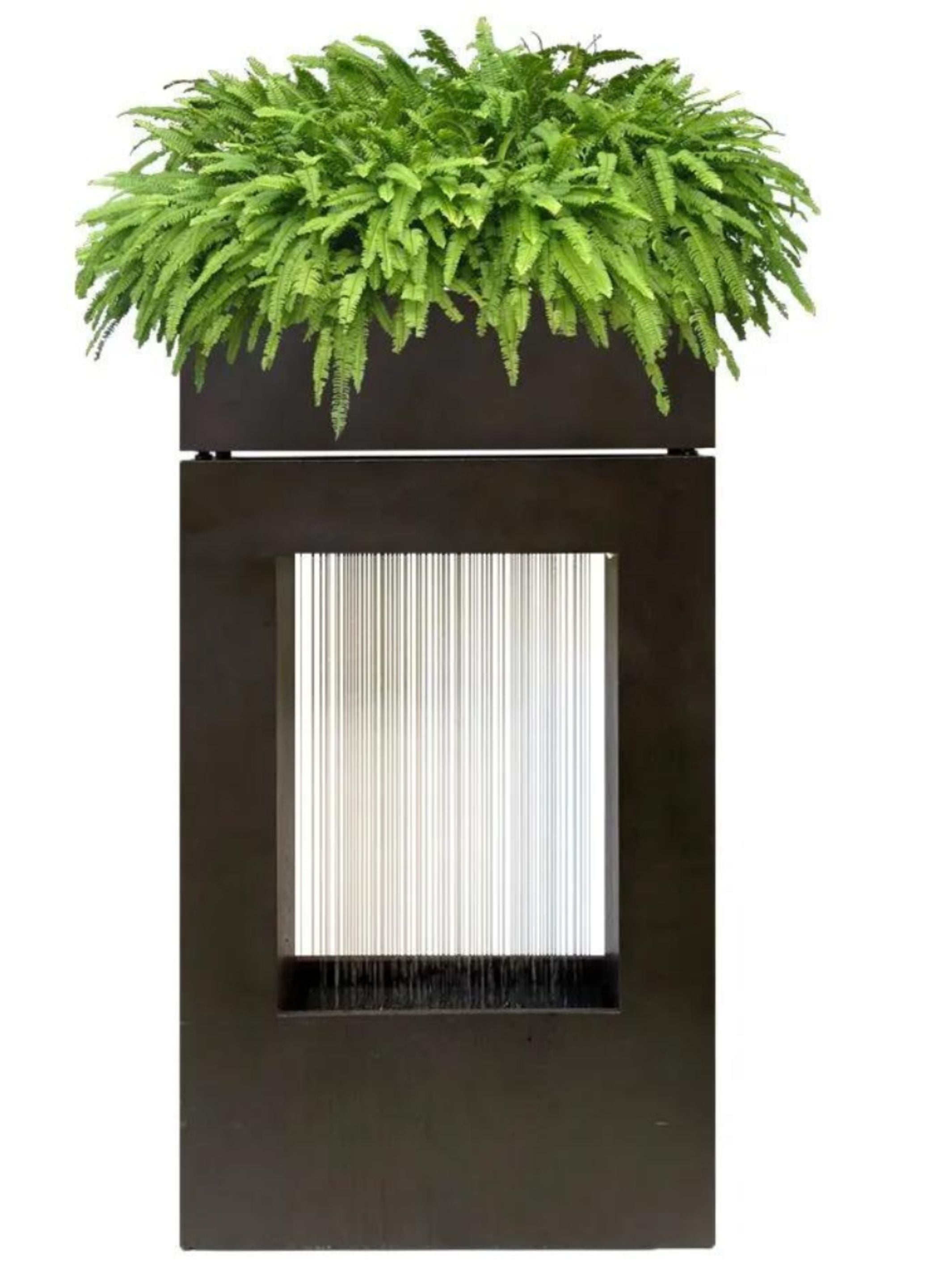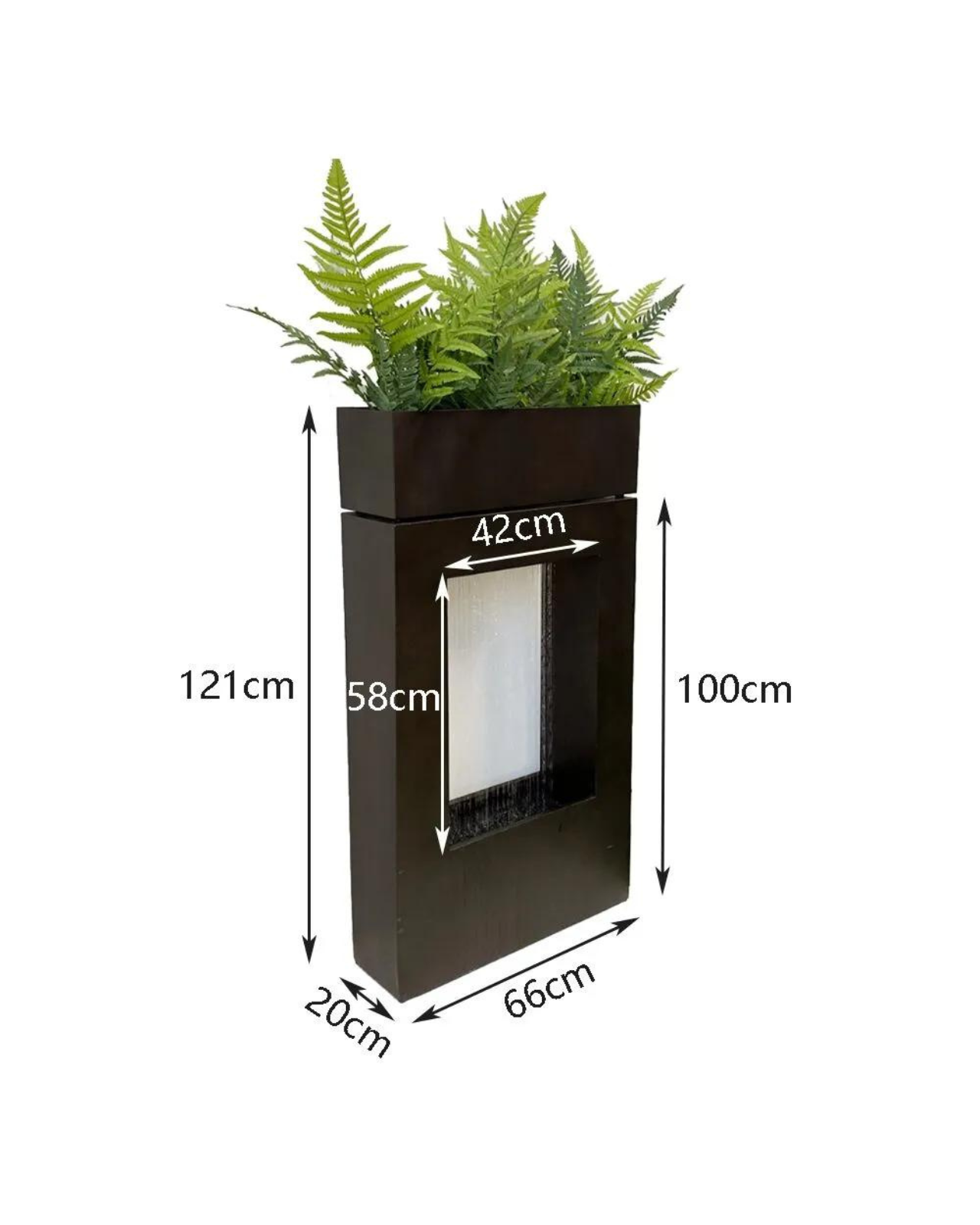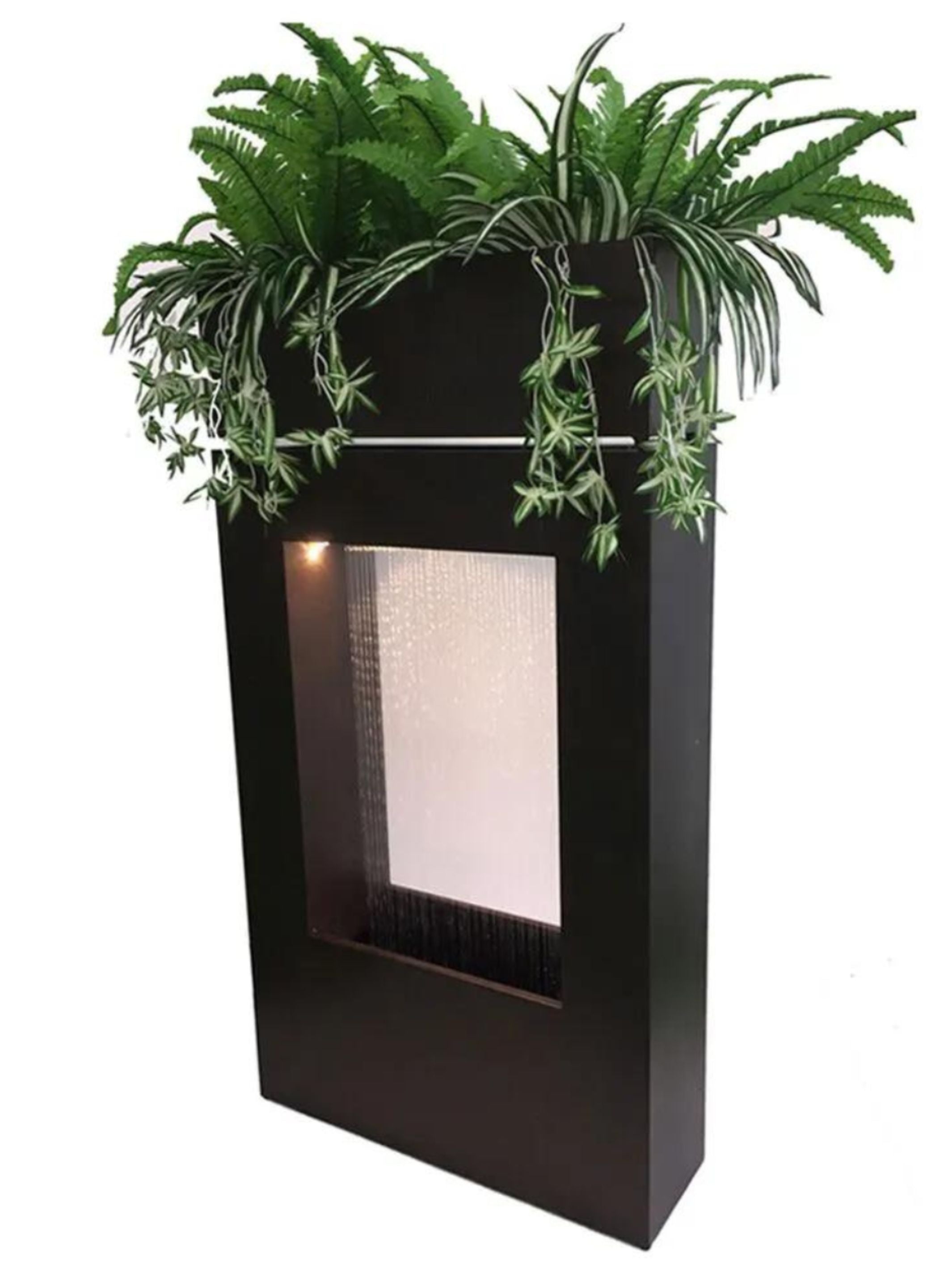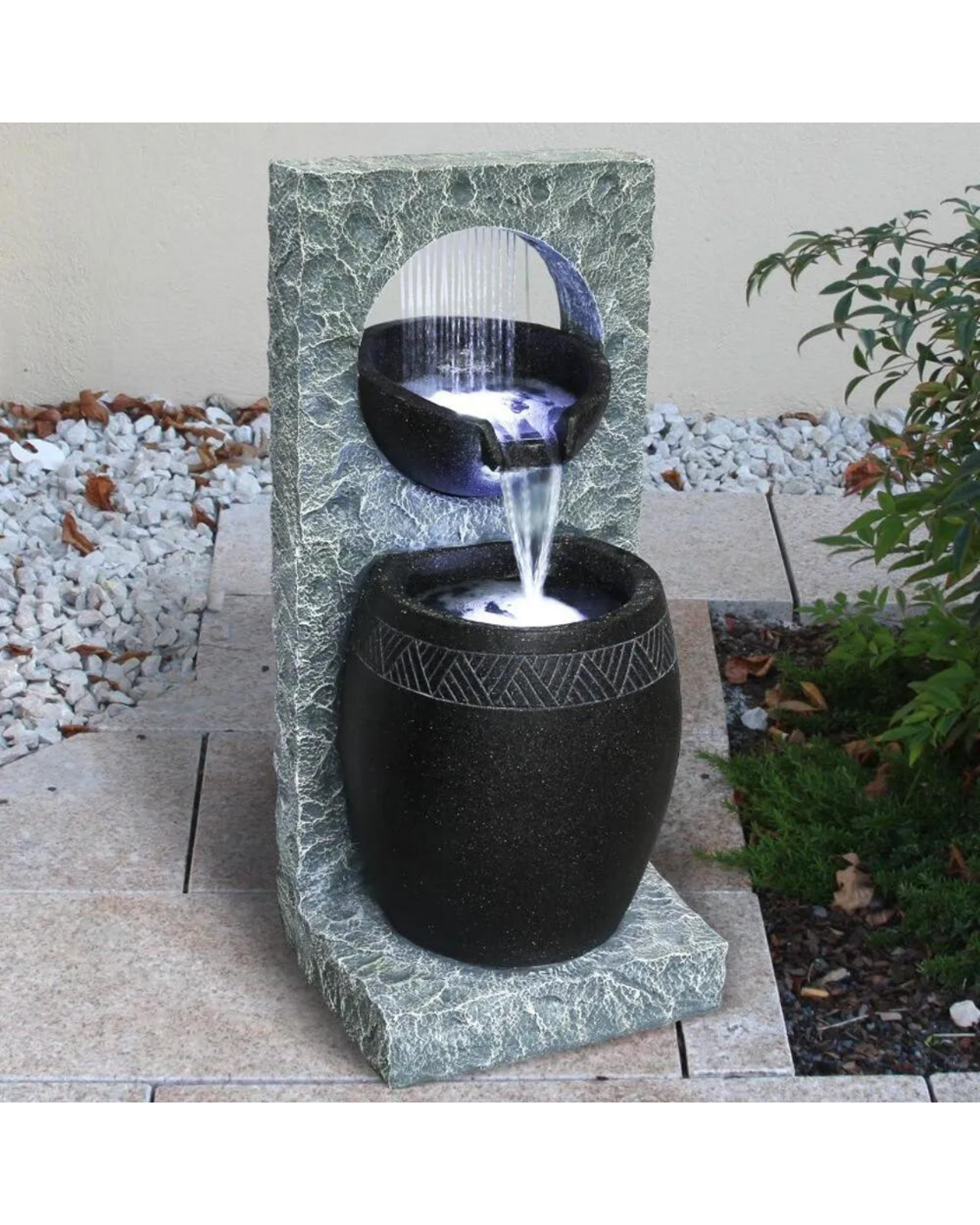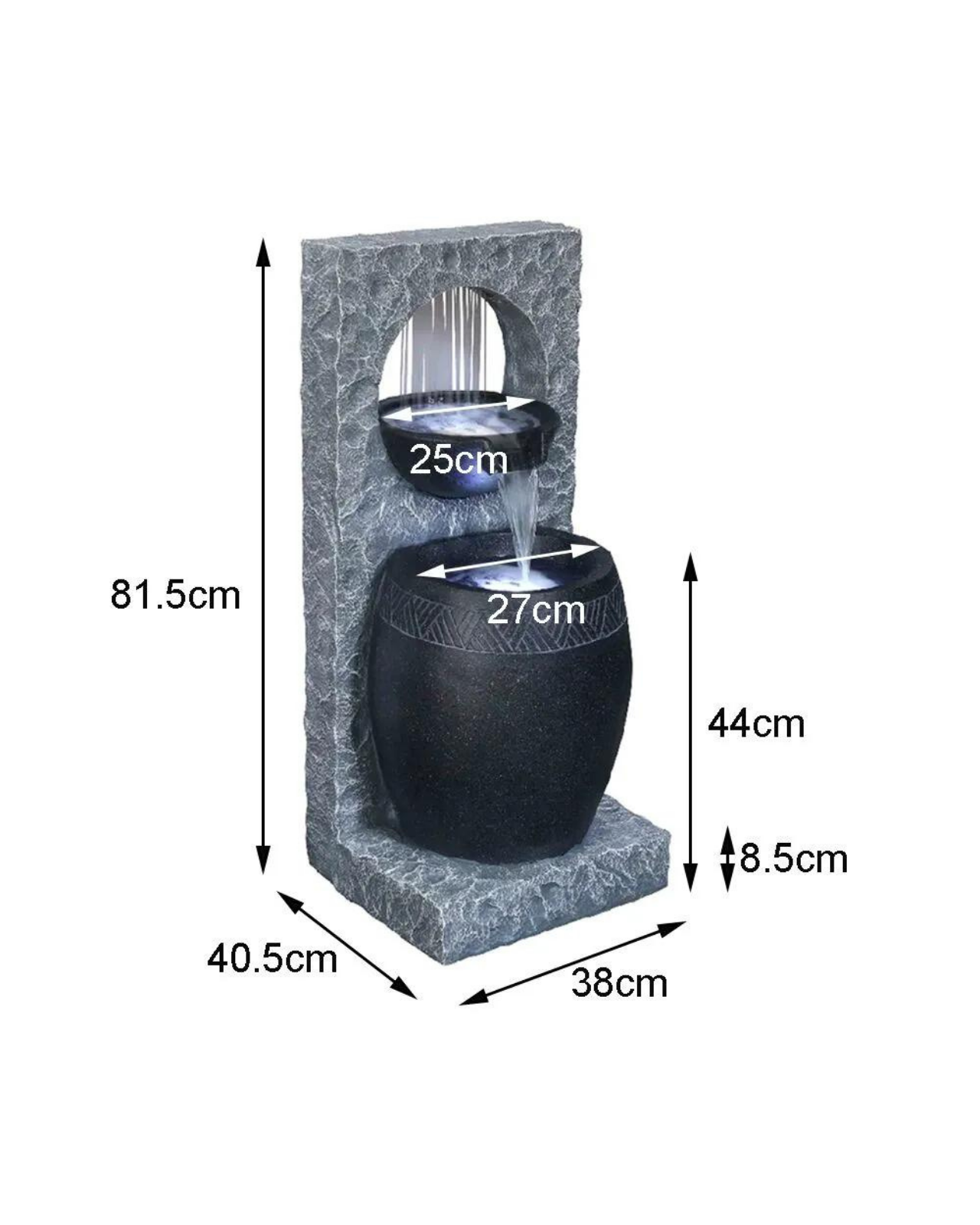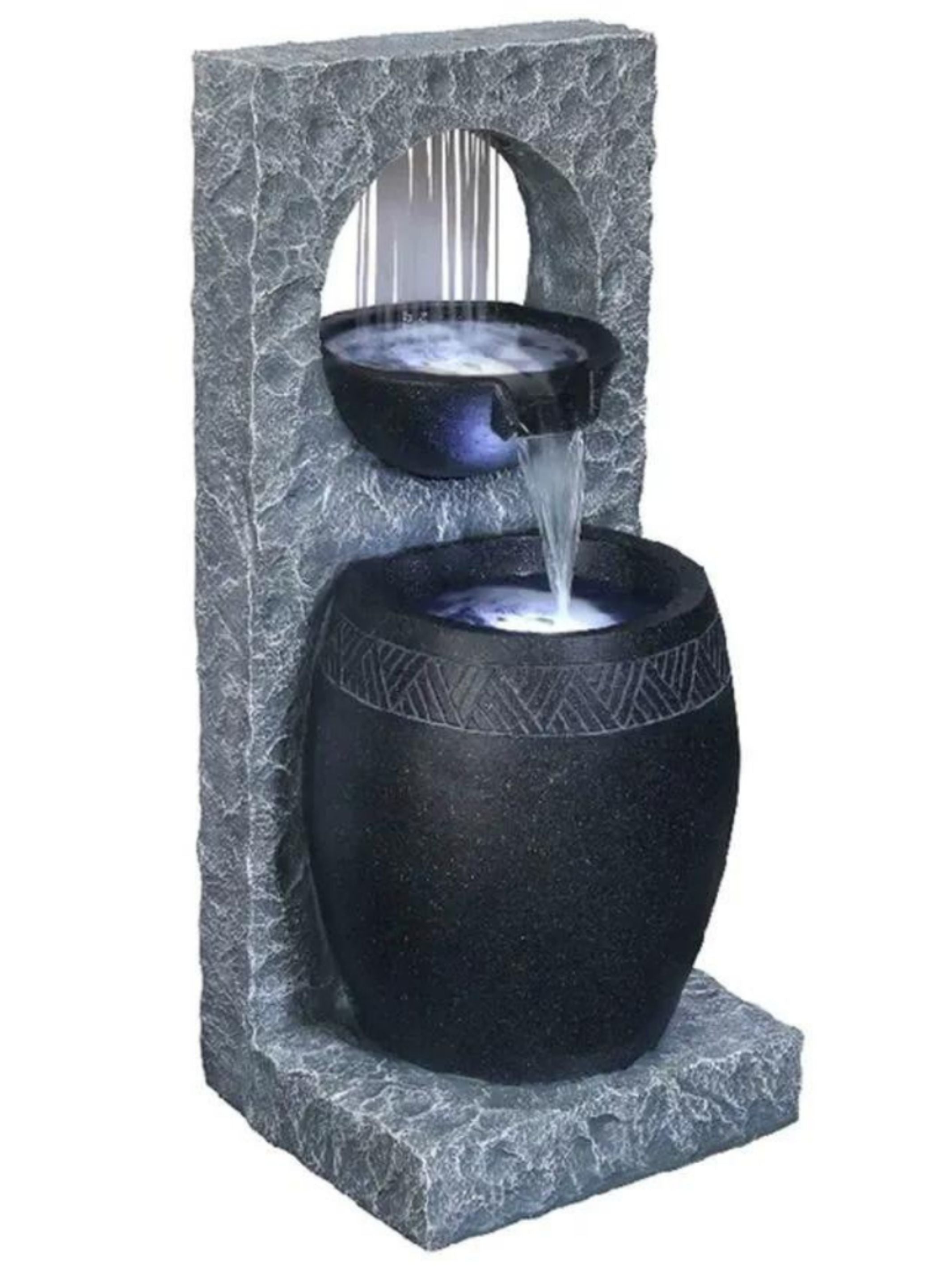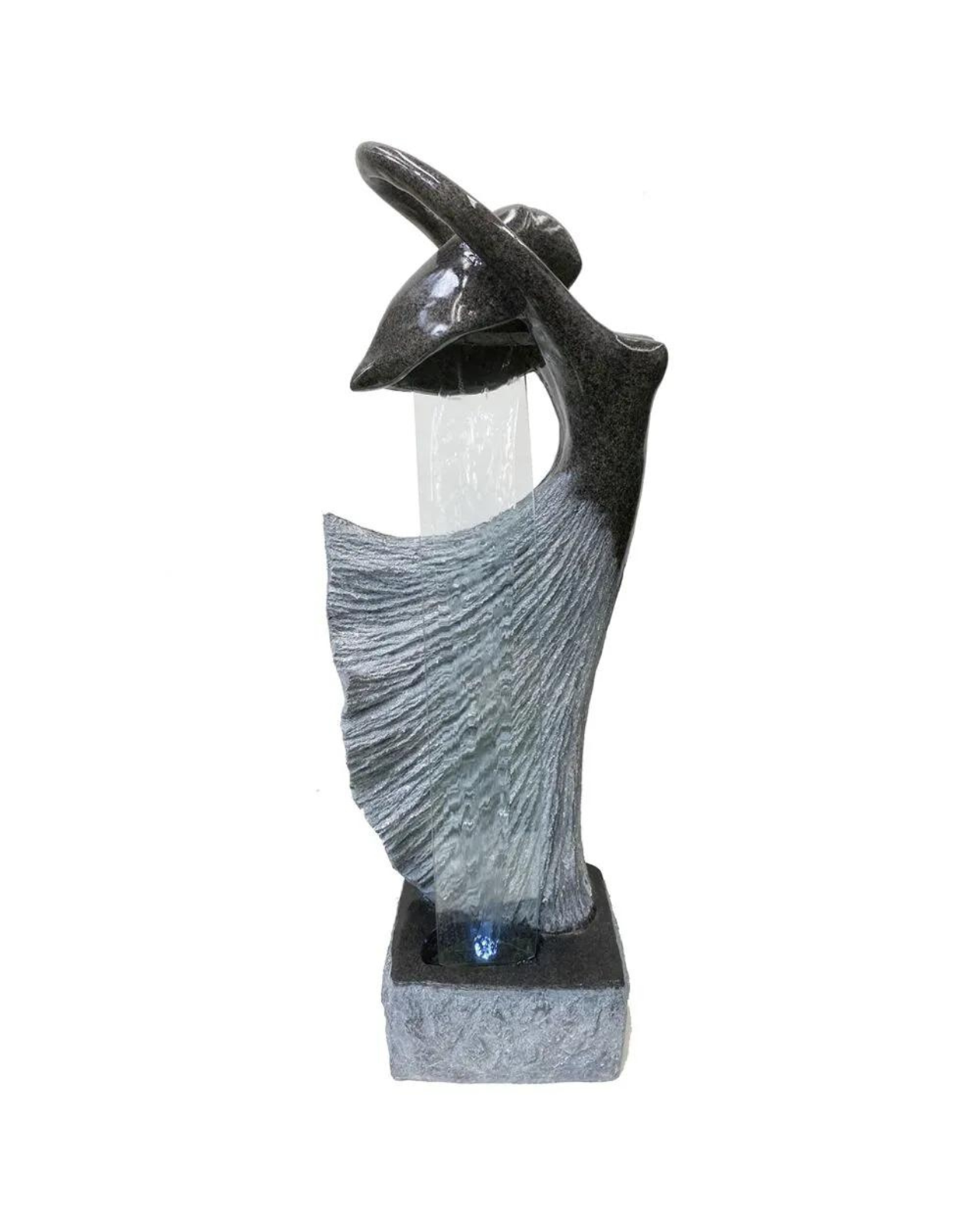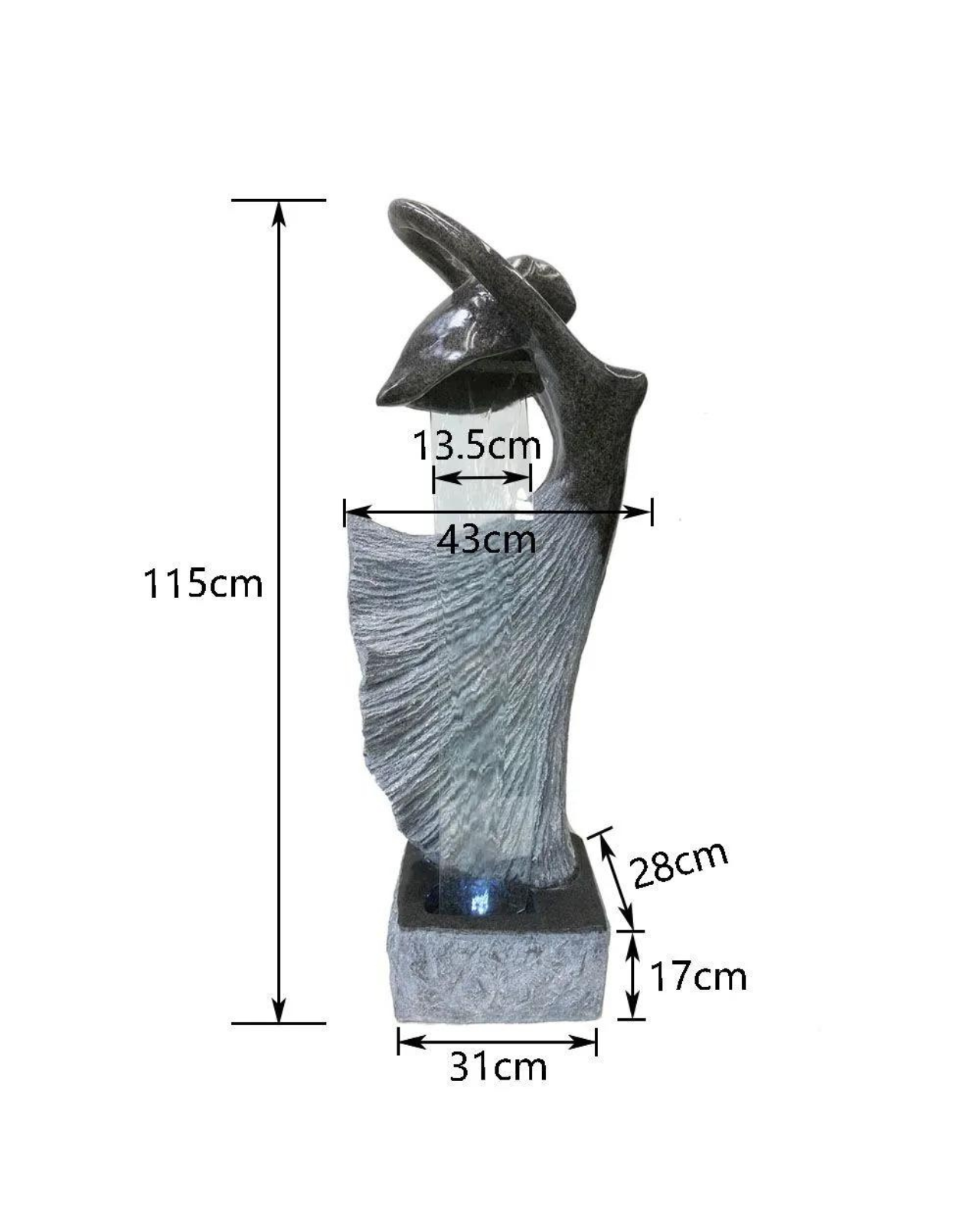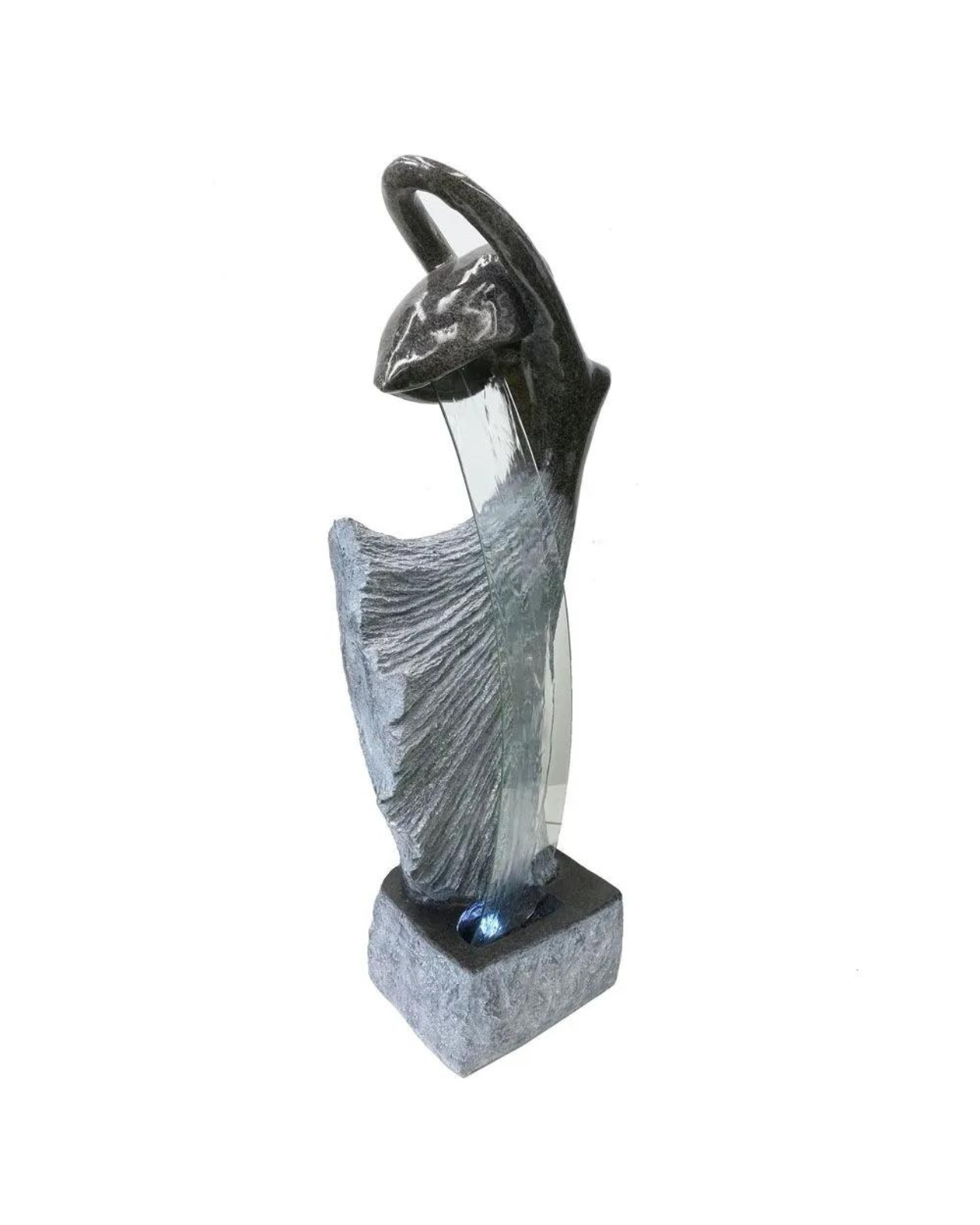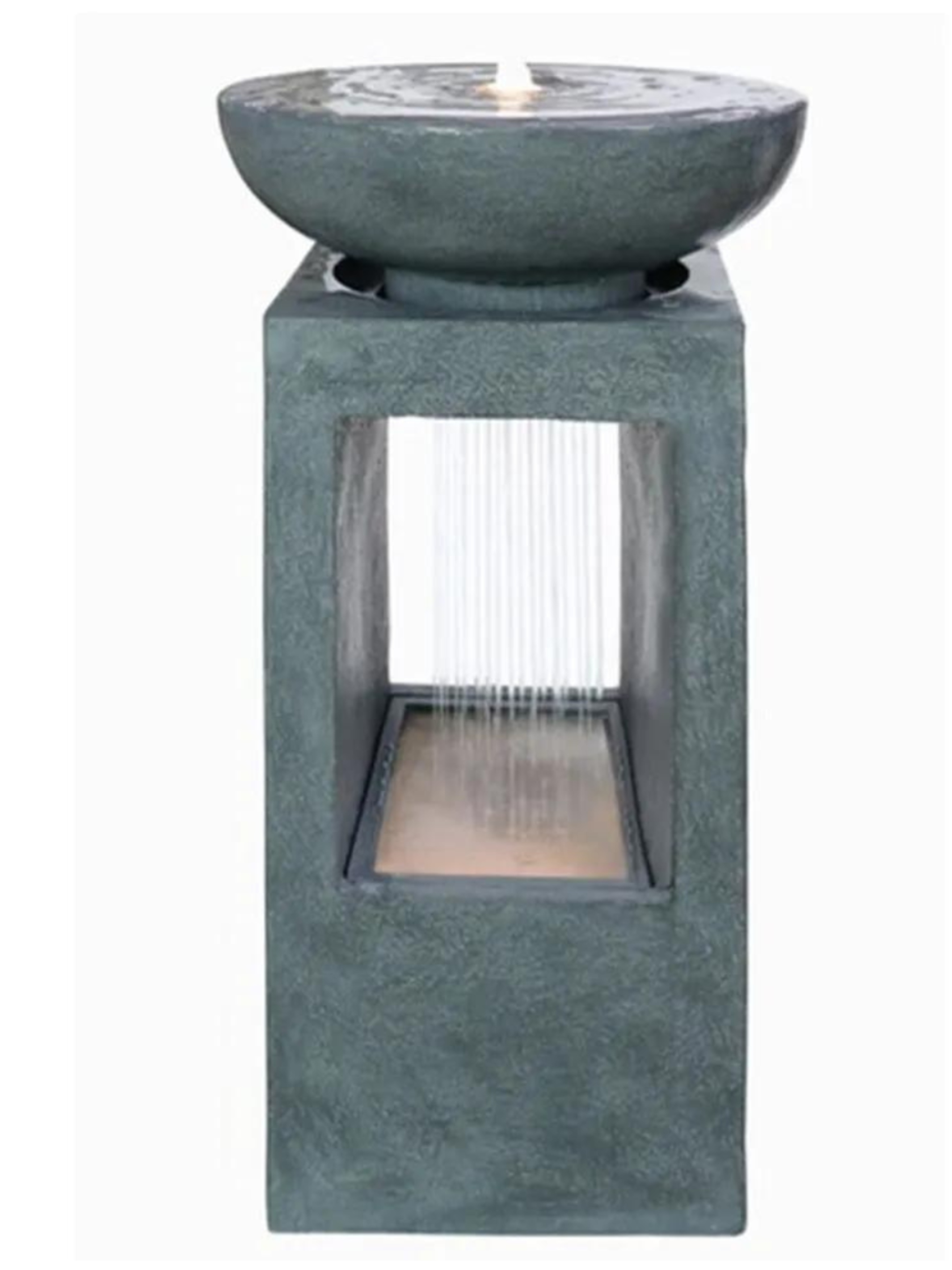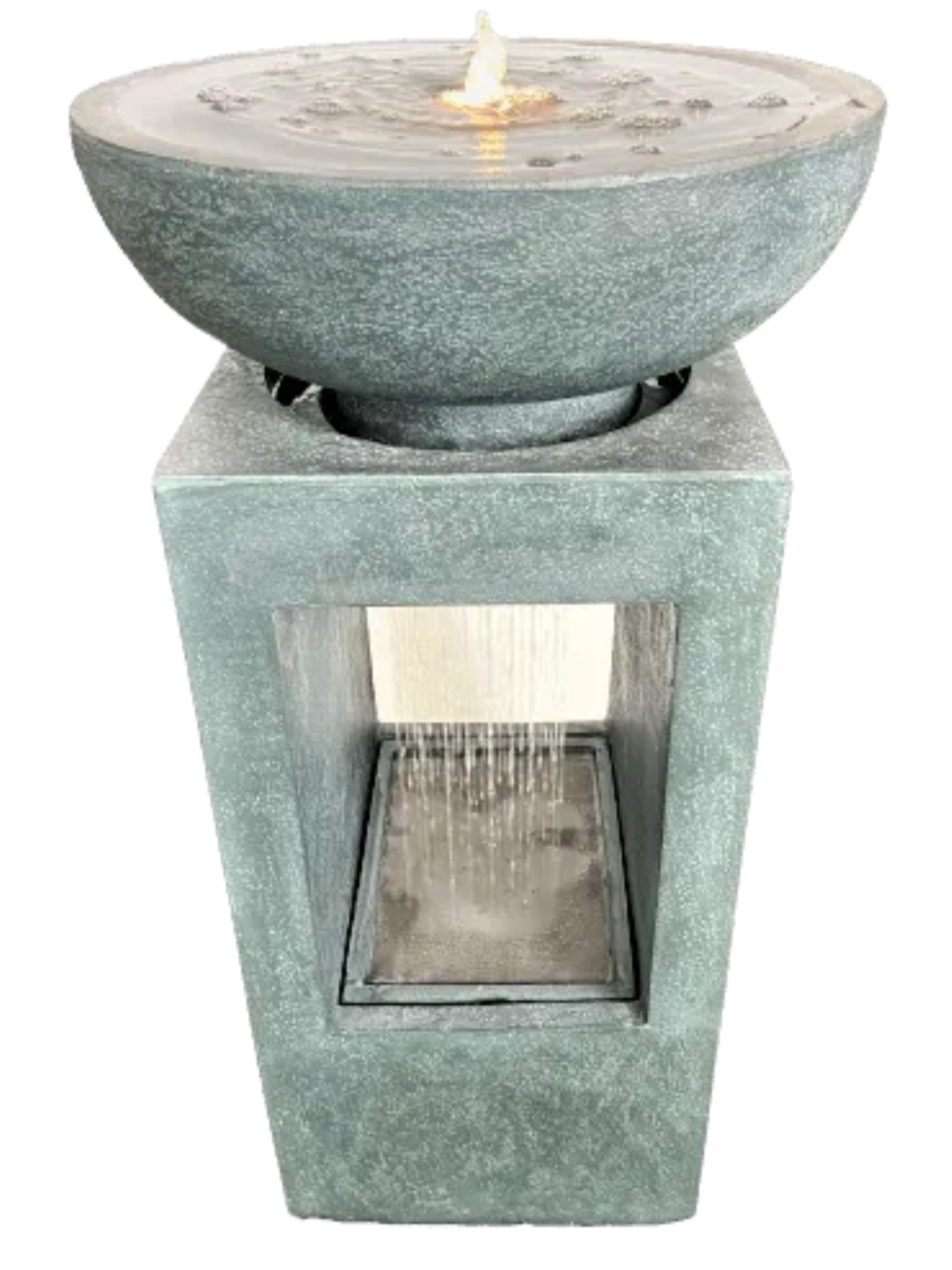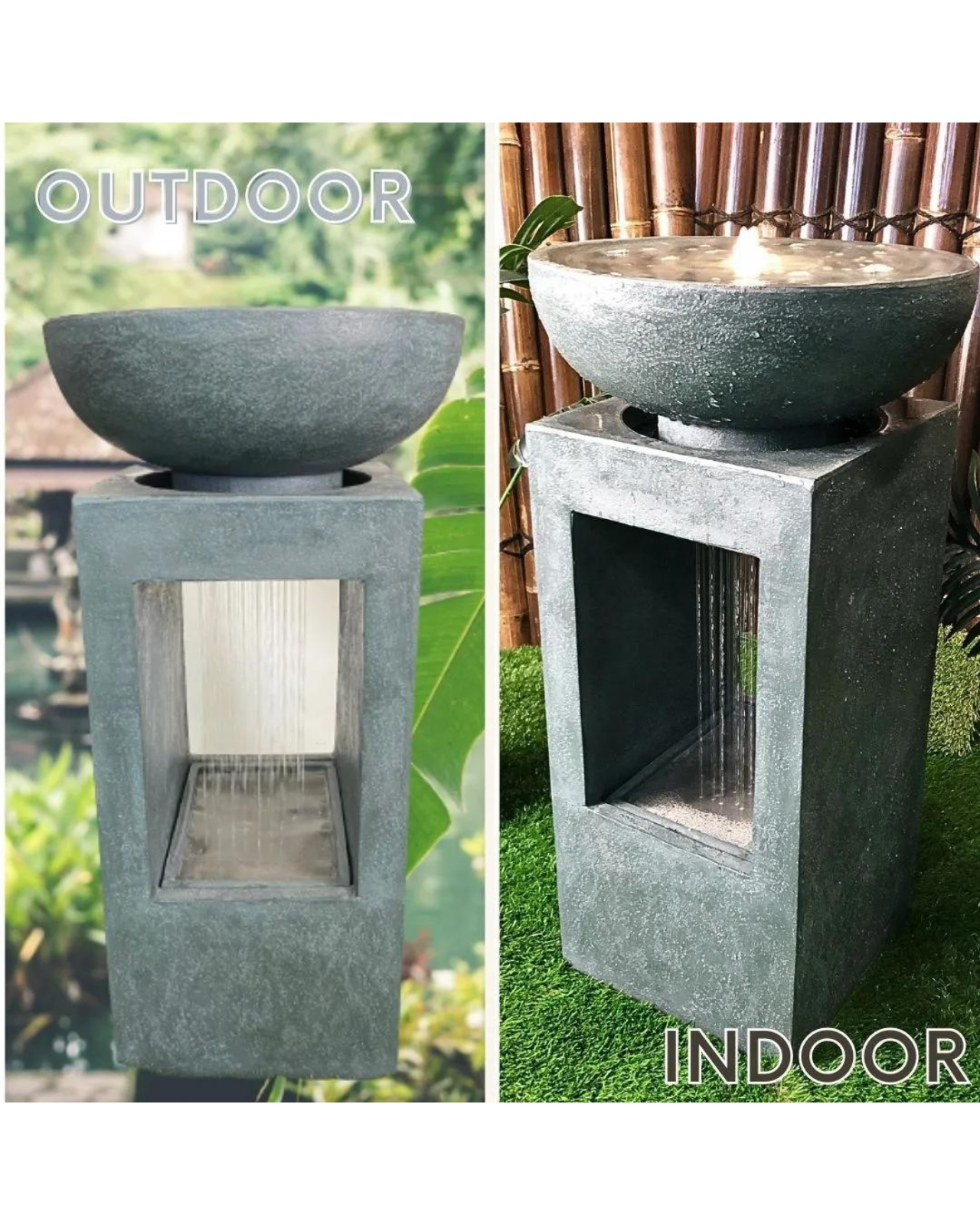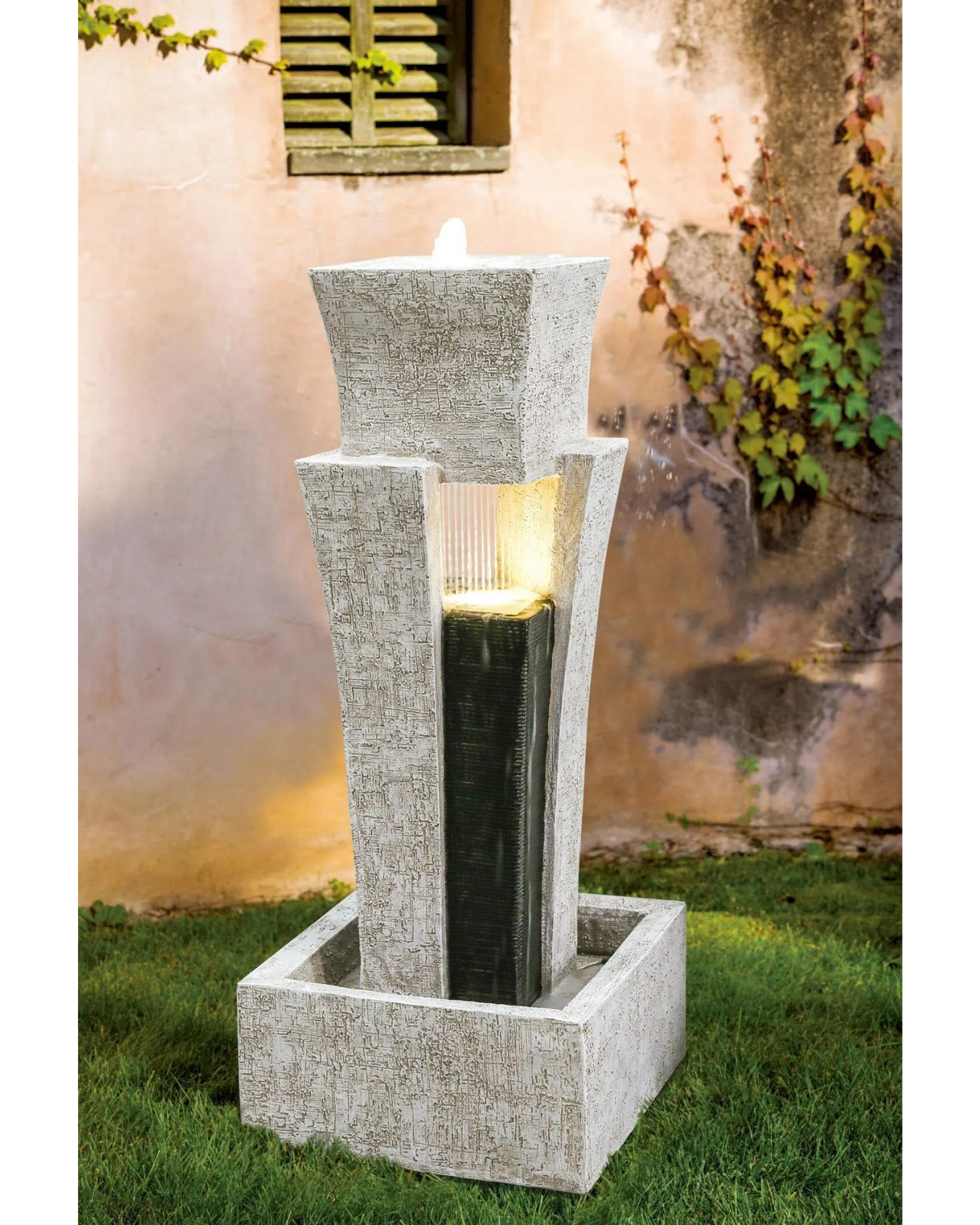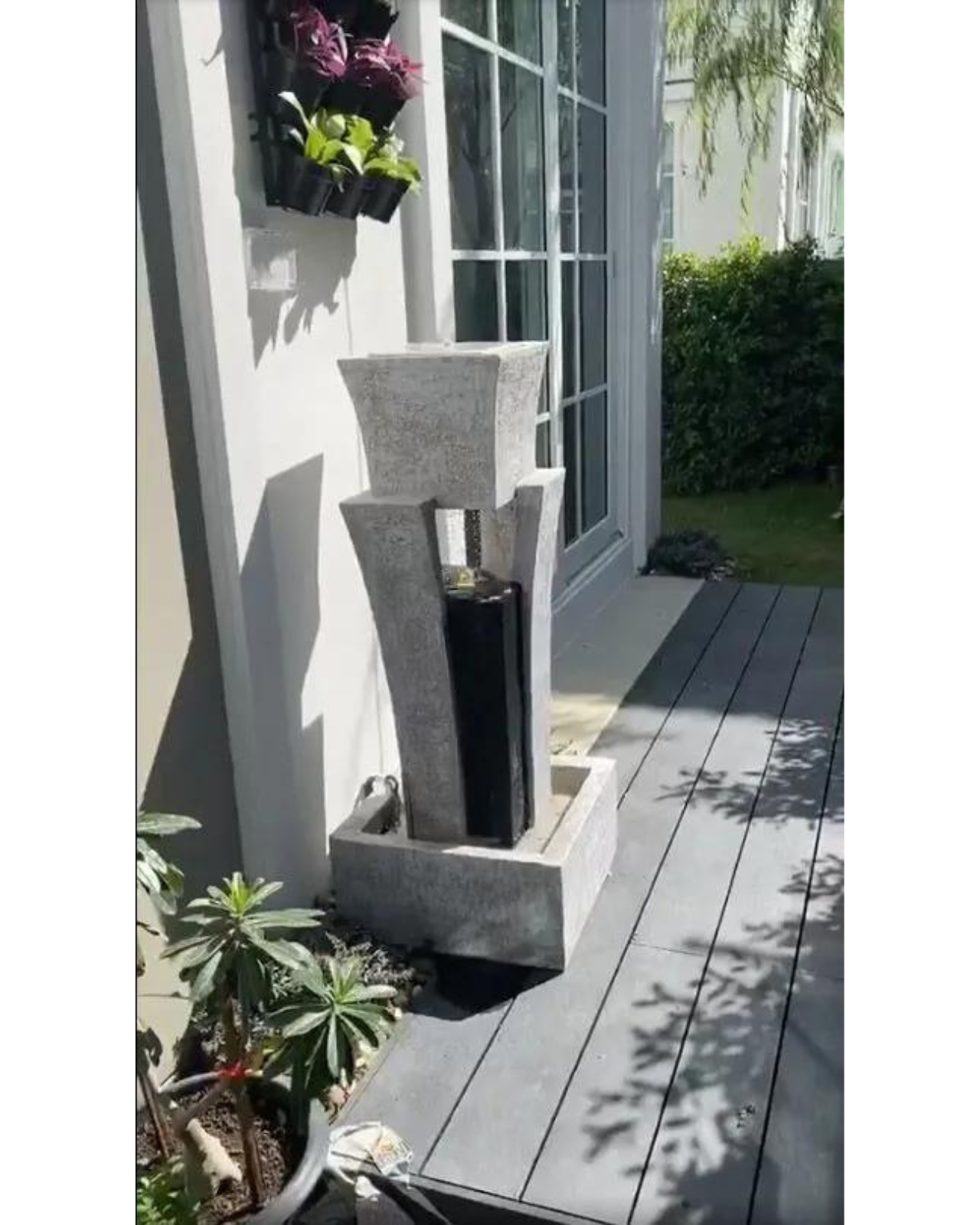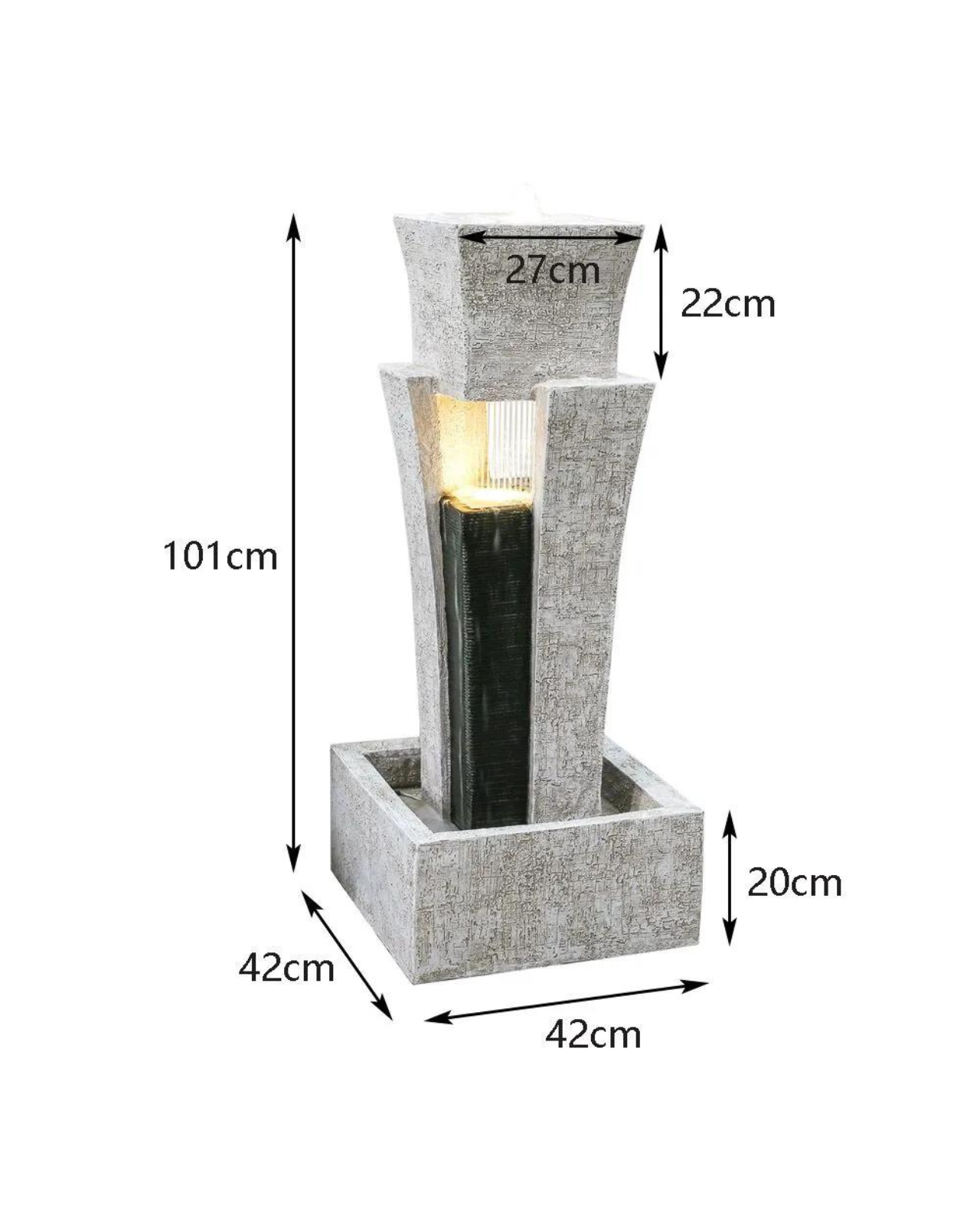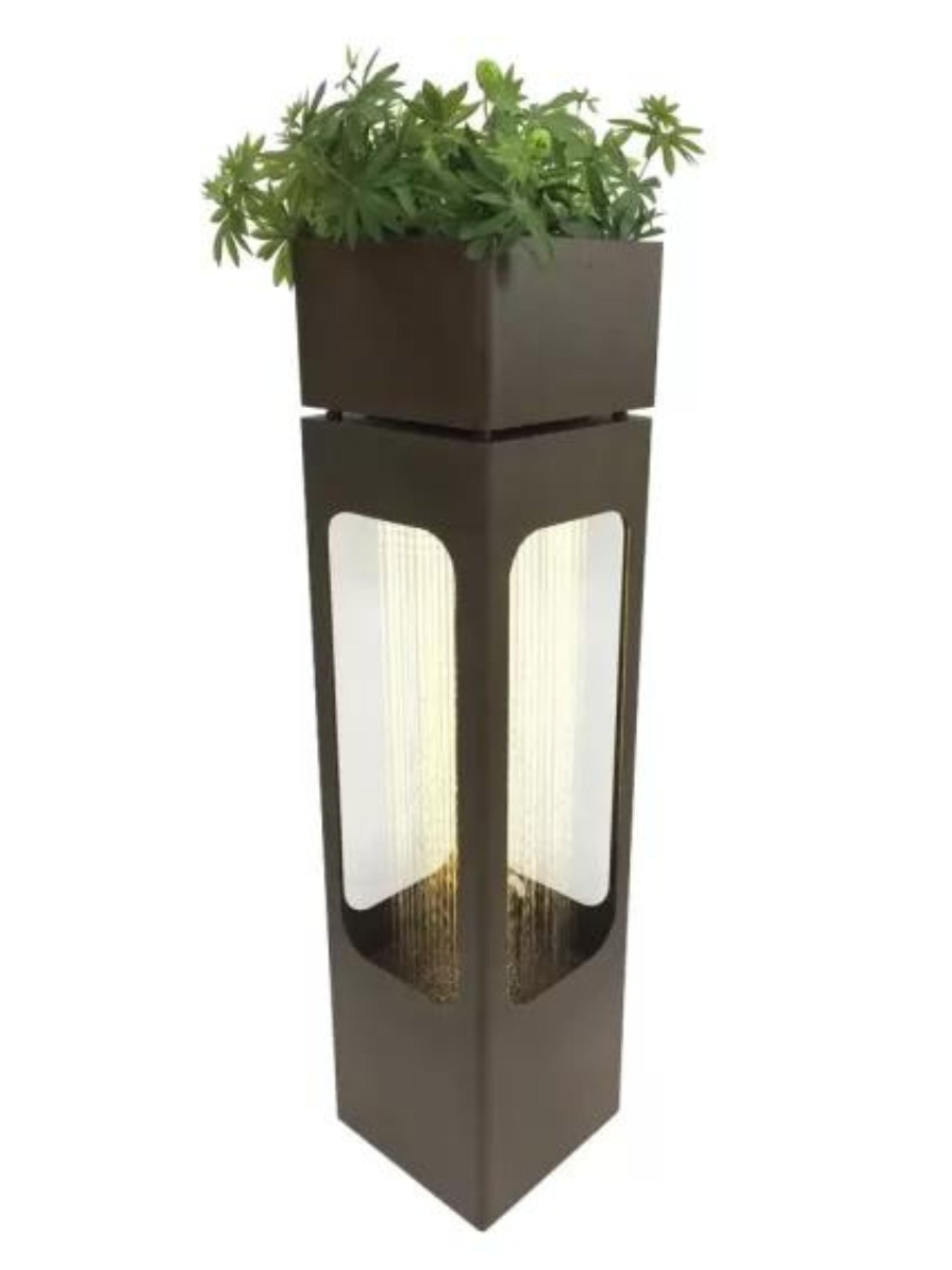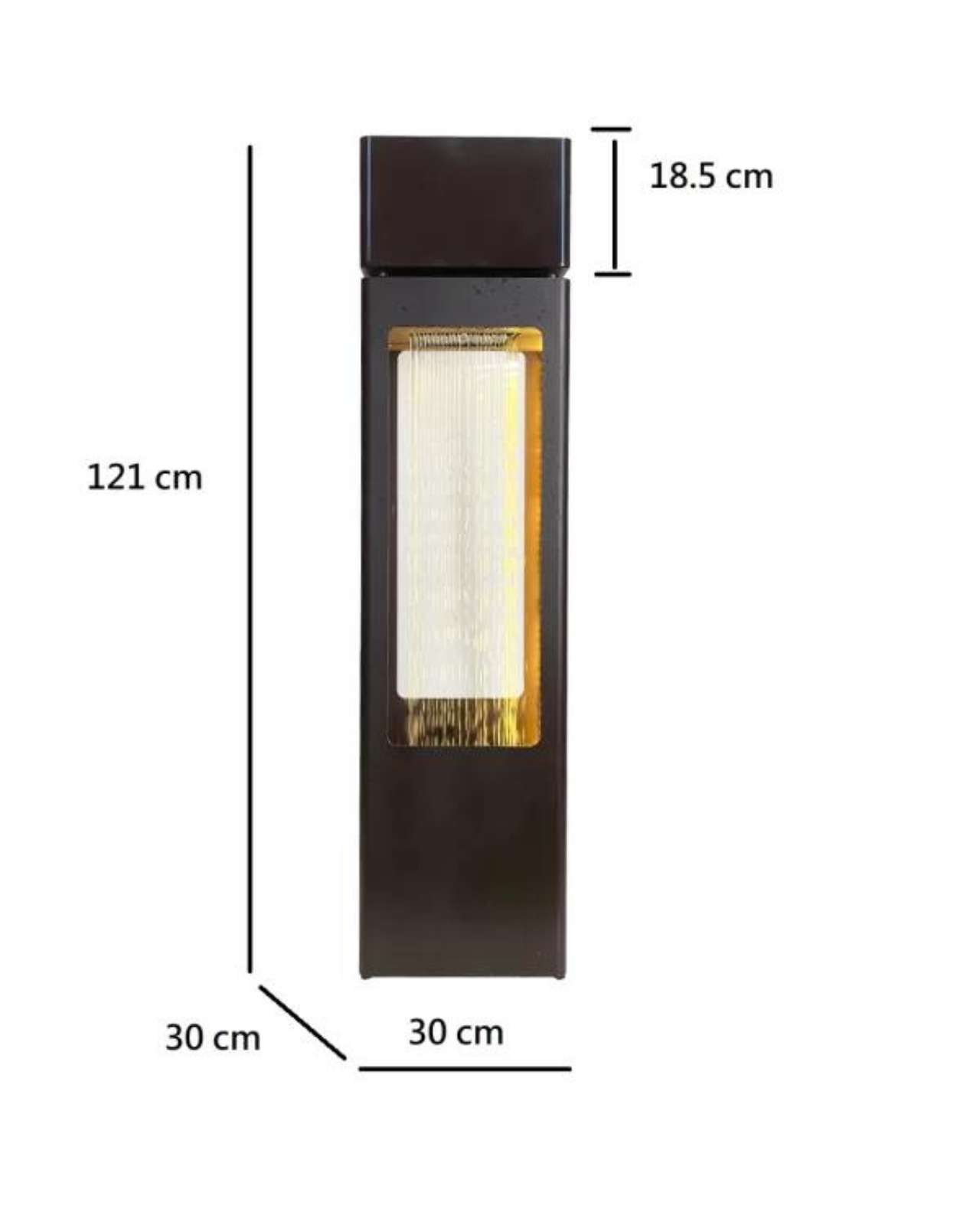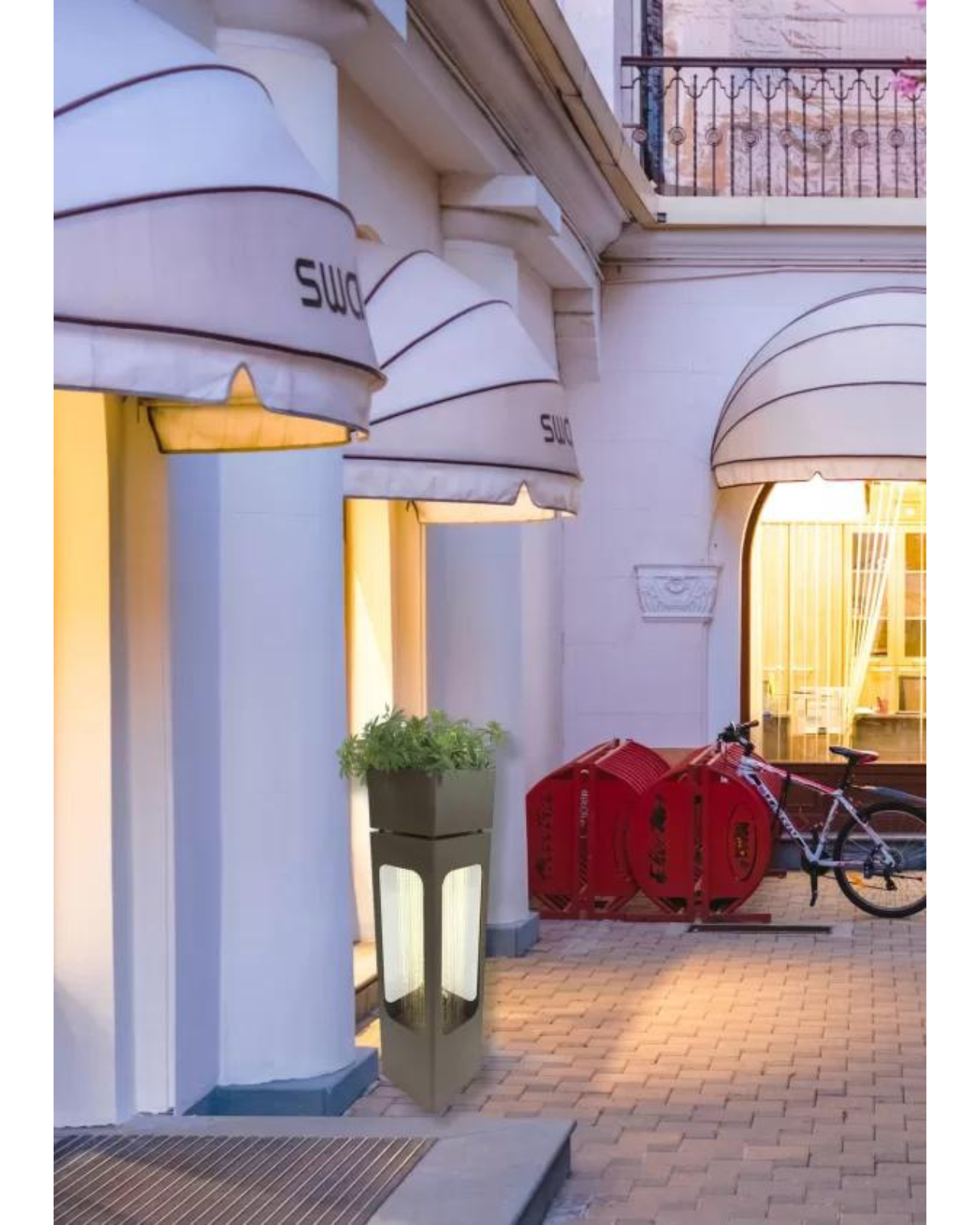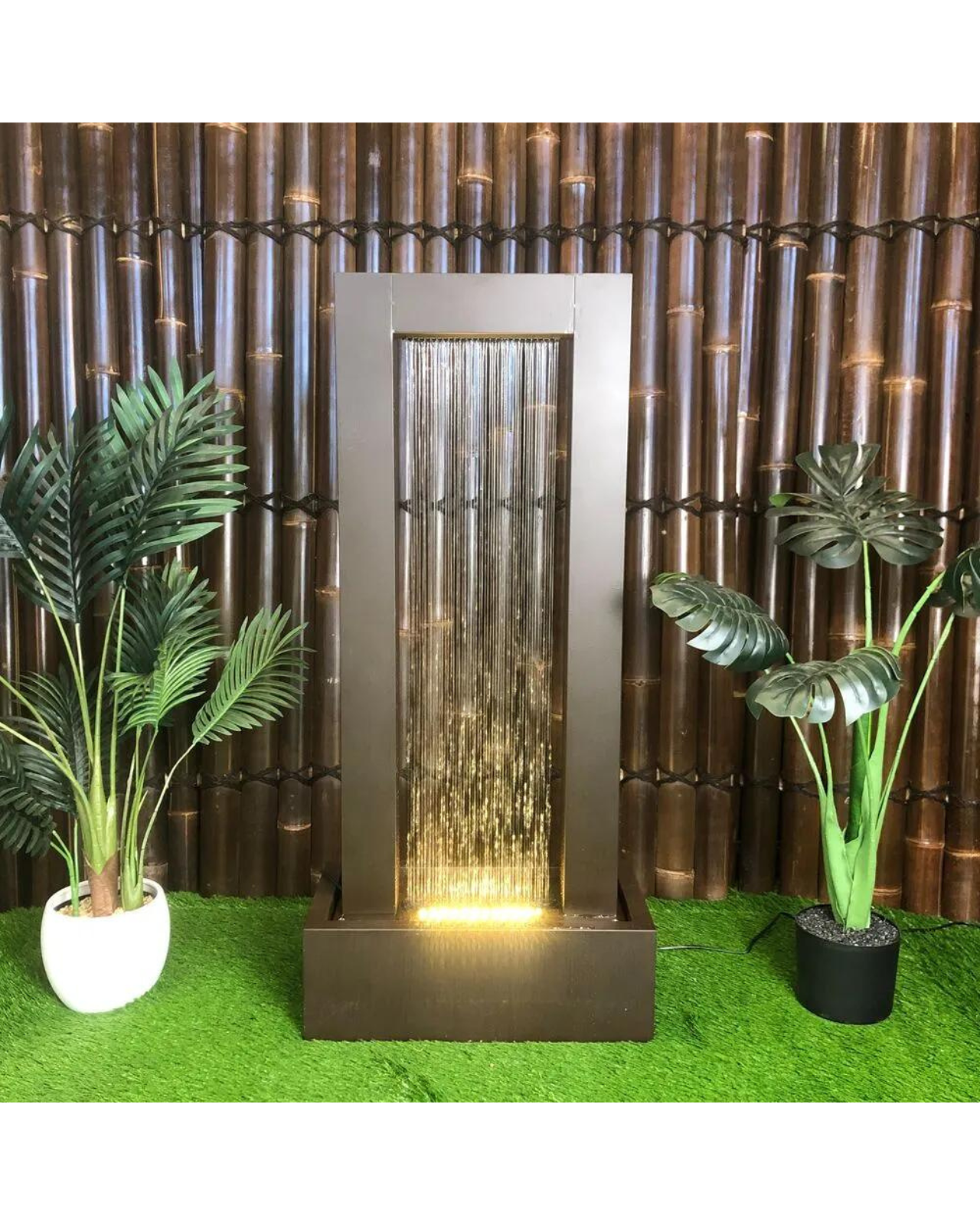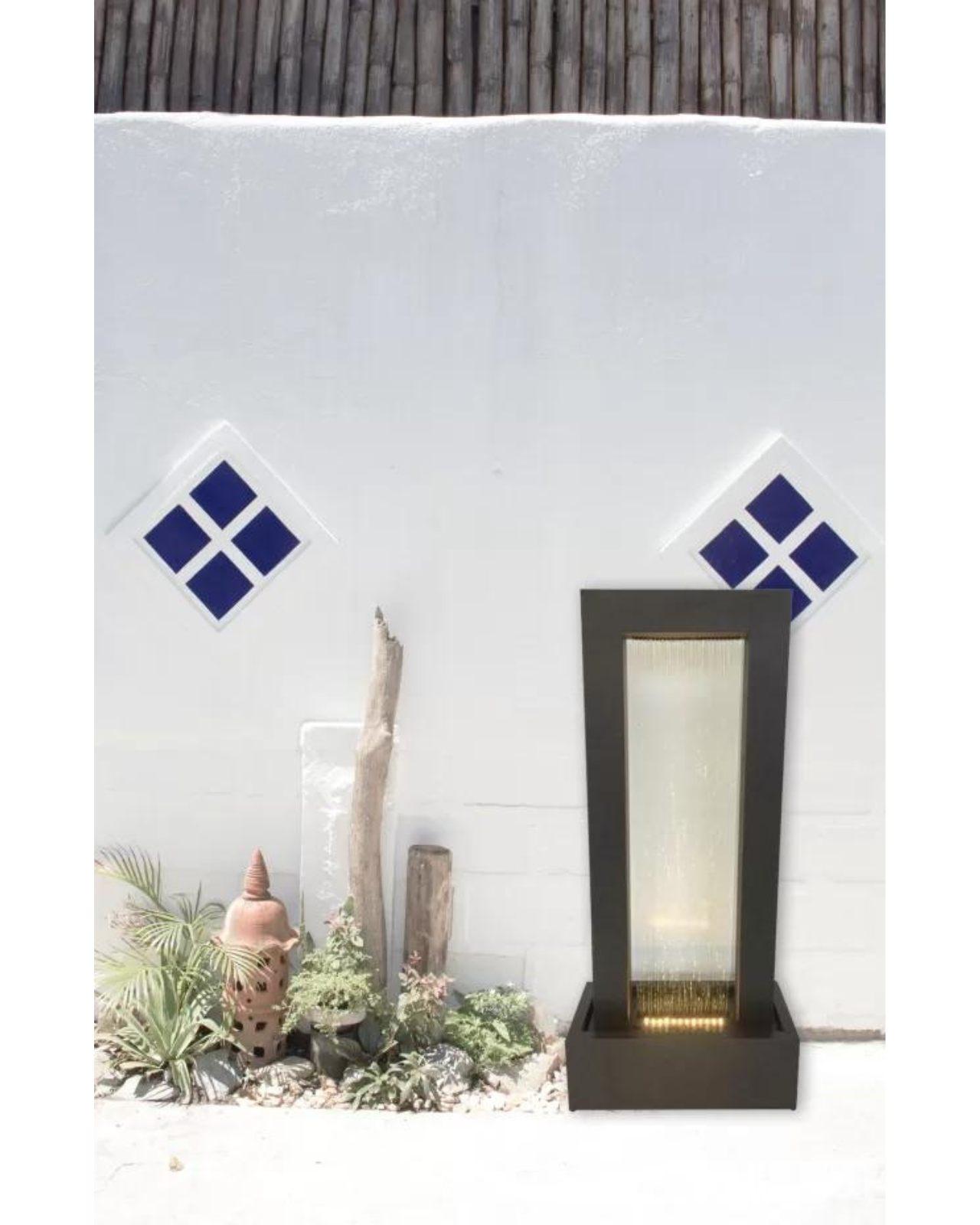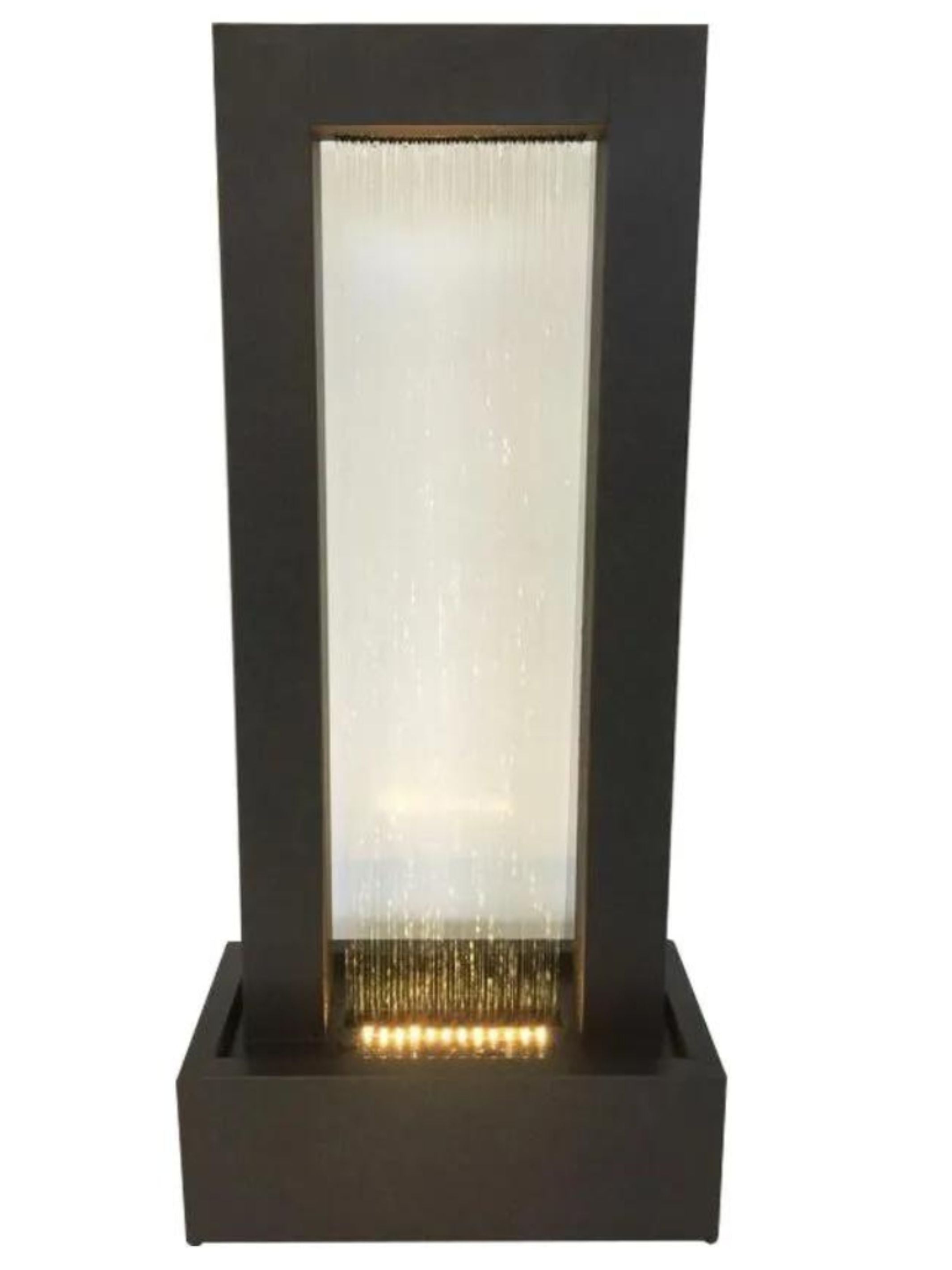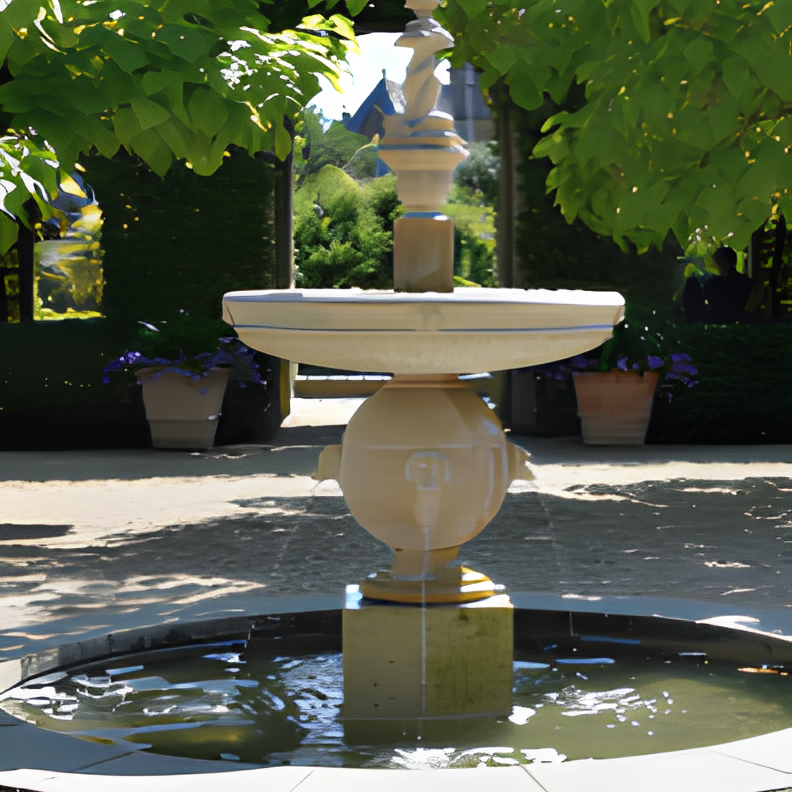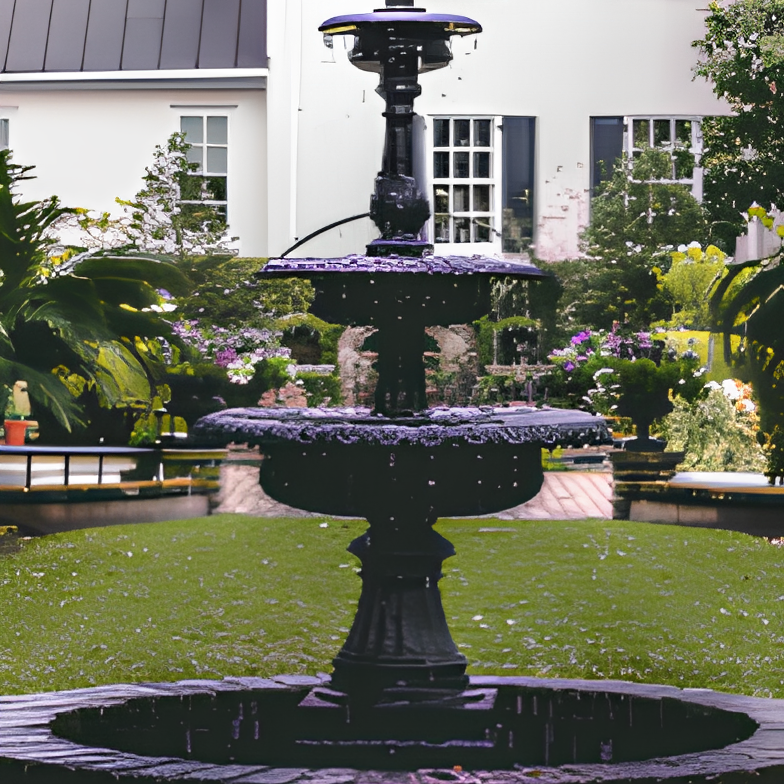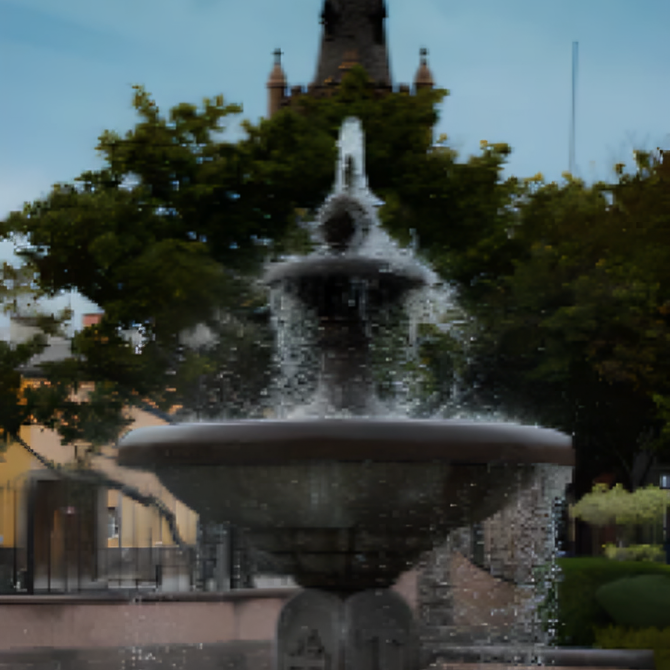Transform your garden or patio into a haven of sophistication and peace with our exclusive collection of rain curtain water features. At Water Features Adore, we embrace the tranquil splendor and mesmerizing allure that a thoughtfully selected rain curtain water feature brings to any outdoor space.
Types of Rain Curtain Water Features
Description of Various Styles and Designs
-
Wall-Mounted: Wall-mounted rain curtains are popular for their space-saving design and ease of integration into existing structures. These types are often seen in indoor settings like hotel lobbies, spas, or residential living rooms, where they add an element of tranquility without occupying floor space. They can be installed against a flat wall or within a recessed space for a more dramatic effect.
-
Free-Standing: Free-standing rain curtain water features are versatile and can be placed almost anywhere, both indoor and outdoor. They come in various shapes and sizes, from tall and slender to wide and expansive. This type is ideal for creating a focal point in a garden, patio, or in the center of a large room or hall.
-
Custom Designs: For spaces that require a unique touch, custom-designed rain curtains offer limitless possibilities. These can range from intricate patterns and shapes to integrating with other architectural elements like staircases or columns. Custom designs allow for personalization to fit the specific aesthetic and functional needs of a space.
Material Choices and Their Impact on Appearance and Sound
-
Glass: Glass rain curtains provide a sleek, modern look and are often used in contemporary settings. They allow light to pass through, creating a play of reflections and shadows that adds to the visual appeal. The sound of water flowing down glass is usually gentle and soothing.
-
Metal: Metals like stainless steel or copper are used for their durability and distinctive appearance. They can be finished in various ways (polished, brushed, patinated) to match the design of the space. Metal rain curtains often produce a sharper, more pronounced sound compared to glass.
-
Stone: Stone materials, including slate, marble, or granite, offer a more natural and rugged look. They are ideal for outdoor settings or indoor spaces that aim for a rustic or earthy ambiance. The sound of water on stone tends to be deeper and more resonant.
Highlighting Some Innovative or Unique Designs
-
Interactive Rain Curtains: Some modern installations include sensors that change the water flow pattern or lighting based on movement or sound, creating an interactive experience for viewers.
-
Artistic Integrations: Rain curtains that double as art pieces, featuring hand-painted backdrops or sculptural elements through which the water flows, offer a unique blend of art and function.
-
Themed Designs: Custom rain curtains can be designed to fit specific themes, like incorporating logos in corporate settings or natural elements like leaves or flowers in garden settings.
-
Eco-Friendly Features: Innovations in sustainability include rain curtains that use recycled water, solar-powered pumps, or materials sourced from sustainable practices.
These various types of rain curtain water features offer a wide range of options to suit different spaces and preferences, each adding a unique aesthetic and auditory experience to the environment. Whether it's a sleek glass installation in a modern office or a rugged stone feature in a serene garden, rain curtains can be tailored to enhance the ambiance of any setting.
Installation and Maintenance of Rain Curtain Water Features
Overview of the Installation Process for Different Types of Rain Curtains
-
Wall-Mounted Rain Curtains: The installation of wall-mounted rain curtains typically involves securing a framework to a stable wall, which supports the water distribution system and the feature's surface material (like glass or metal). These systems often require an integrated water reservoir at the base to collect and recirculate water. Electrical connections for pumps and lighting must be safely installed, usually by a professional, to ensure compliance with building codes and safety standards.
-
Free-Standing Rain Curtains: Free-standing rain curtains come with their own support structure, making them somewhat easier to install. They still require a level surface and access to a water source and power supply. In outdoor settings, it's important to consider factors like wind and weather exposure during installation.
-
Custom Designs: Custom rain curtains can vary significantly in their installation process, depending on the complexity and size of the design. These often require professional installation teams who can handle unique challenges such as integrating the feature with existing architectural elements or creating a custom water circulation system.
Regular Maintenance Requirements and Tips
-
Water Quality Management: Regularly check and maintain the water quality to prevent algae growth and mineral deposits. This may include treating the water with appropriate chemicals and changing the water periodically.
-
Cleaning the Feature: The surface of the rain curtain, whether it's glass, metal, or stone, should be cleaned regularly to remove dust, dirt, and water spots. For indoor features, maintaining a clean surface is also important for preserving indoor air quality.
-
Pump and Filtration System Maintenance: Regular maintenance of the pump and filtration system is crucial to ensure smooth operation. This includes cleaning filters, checking for clogs, and ensuring the pump is functioning correctly.
-
Inspecting for Leaks and Damage: Regular inspections can help catch any leaks or wear and tear early, preventing more significant problems down the line.
Troubleshooting Common Issues
-
Uneven Water Flow: If the water is not flowing evenly, it may be due to clogged nozzles or an uneven water distribution system. Cleaning the nozzles and adjusting the water distribution can usually resolve this issue.
-
Pump Problems: If the pump is noisy or not working efficiently, it could be due to blockages, a malfunction, or electrical issues. Checking the pump for obstructions and ensuring it is properly connected to the power supply can help. If the issue persists, consulting a professional is advised.
-
Water Leakage: Leakage can occur due to improper installation, sealant failure, or damage to the water reservoir. Identifying the source of the leak is key to resolving this issue, which might involve resealing or repairing damaged parts.
-
Algae Growth: Algae can be a common issue, especially in outdoor rain curtains. Regular cleaning and water treatment can help prevent algae buildup.
Proper installation and regular maintenance are key to ensuring the longevity and proper functioning of rain curtain water features. While some maintenance tasks can be handled by the owner, it's advisable to consult with professionals for installation and more complex maintenance or repair needs.
Benefits and Applications of Rain Curtain Water Features
Discussing the Benefits
-
Aesthetic Appeal: Rain curtain water features are renowned for their stunning visual impact. They bring a dynamic element to any space, combining the soothing qualities of water with a range of design styles. Whether it's a sleek, contemporary glass installation or a rustic stone feature, these water features can significantly enhance the aesthetic of their surroundings.
-
Noise Reduction: The gentle sound of cascading water from rain curtains can mask unwanted ambient noise, creating a more serene and focused environment. This is particularly beneficial in urban settings or busy commercial areas where background noise can be distracting or stressful.
-
Humidity Control: In indoor settings, rain curtain water features can help regulate humidity levels, adding moisture to dry air which can be beneficial for both human health and the well-being of indoor plants. This makes them an attractive addition to spaces like office buildings or homes, especially in regions with dry climates.
-
Therapeutic Effects: The combination of visual beauty and the soothing sound of water makes rain curtain water features a popular choice in therapeutic settings. They are often used in spas, wellness centers, and healthcare facilities to create a calming atmosphere that can aid in relaxation and stress relief.
Various Applications
-
Residential Homes: In homes, rain curtain water features can be integrated into living rooms, patios, or gardens, creating a tranquil and stylish focal point. They can be customized to fit the size and style of the residential space, adding a unique and personal touch.
-
Corporate Buildings: In corporate settings, these features are often used in lobbies, meeting rooms, or employee relaxation areas to create an inviting and relaxing atmosphere. They can also serve as a branding element, incorporating company logos or colors.
-
Public Spaces: In public spaces such as parks, museums, and plazas, rain curtains can be used to enhance the aesthetic appeal and create a sense of calm. They can also serve as interactive art installations, attracting visitors and enhancing the overall experience of the space.
-
Therapeutic Settings: In healthcare facilities, wellness centers, and spas, rain curtain water features are used to create a soothing environment that promotes relaxation and well-being. The presence of water and its calming effects can be particularly beneficial in therapeutic and healing settings.
Environmental Impact and Sustainability Considerations
-
Water Conservation: Modern rain curtain designs often incorporate water recirculation systems, reducing the need for constant water supply and promoting water conservation.
-
Energy Efficiency: The use of energy-efficient pumps and LED lighting reduces the environmental footprint of these features, making them a more sustainable option.
-
Material Selection: Choosing eco-friendly and sustainable materials for construction and design can further enhance the environmental friendliness of rain curtain water features.
-
Supporting Biodiversity: Outdoor installations can contribute to local biodiversity, providing a water source for birds and insects and integrating seamlessly with natural landscaping.
In summary, rain curtain water features offer a multitude of benefits ranging from enhancing the aesthetic appeal of a space to providing therapeutic effects and noise reduction. Their versatility makes them suitable for a wide range of applications, from residential to corporate and therapeutic settings. Additionally, with thoughtful design and technology integration, these features can also align with environmental sustainability goals.
Future Trends and Innovations in Rain Curtain Water Features
Exploration of Emerging Trends in Rain Curtain Design
-
Smart Technology Integration: The incorporation of smart technology is one of the most exciting trends in rain curtain design. Future rain curtains may include features like app-controlled water flow, lighting, and even sound effects, allowing for customization according to the user's mood or the specific event. Voice activation and integration with home automation systems could also become standard, offering unparalleled convenience and control.
-
Eco-Friendly Materials: As sustainability becomes increasingly important, the use of eco-friendly materials in rain curtain construction will likely grow. This could involve recycled or biodegradable materials for the structural components and the use of water conservation technologies such as rainwater harvesting systems to feed the
water feature.
Predictions for Future Applications and Technological Advancements
-
Broader Residential Use: With advancements in technology, rain curtain water features may become more accessible and easier to install and maintain, leading to broader use in residential settings. DIY kits with customizable options could become popular, allowing homeowners to create their own unique installations.
-
Interactive Public Art Installations: In public spaces, rain curtains might evolve into interactive art installations that respond to environmental factors like wind, temperature, or even the presence of people. This would not only enhance the aesthetic appeal of urban spaces but also engage the public in a dynamic and immersive way.
-
Healthcare and Therapeutic Applications: Given their calming effects, future rain curtains could be specifically designed for therapeutic and healthcare settings, with features like adjustable sound and light therapy options to aid in relaxation and stress relief.
How These Features Might Evolve in Response to Changing Architectural and Environmental Concerns
-
Adapting to Climate Change: As climate change impacts weather patterns, rain curtain designs may incorporate features to handle a wider range of weather conditions, particularly for outdoor installations. This might include automated systems to adjust water flow and protect the feature during extreme weather events.
-
Urban Heat Island Mitigation: In response to the urban heat island effect, rain curtains in city environments could be designed to aid in cooling, both through the evaporation of water and as part of integrated green spaces that reduce overall city temperatures.
-
Architectural Integration: Future rain curtains may be more seamlessly integrated into building designs, possibly functioning as part of the building's climate control system or as living walls that combine water features with vertical gardens.
-
Sustainability Focus: With a growing focus on sustainability, future rain curtain designs will likely prioritize energy efficiency and minimal environmental impact, using renewable energy sources and sustainable materials.
In conclusion, the future of rain curtain water features looks bright, with advancements in technology and materials paving the way for more innovative, sustainable, and interactive installations. These features are set to become more than just aesthetic additions, evolving into integral components of architectural design and urban planning that address both environmental and social needs.
The Appeal and Versatility of Rain Curtain Water Features
The Multifaceted Appeal of Rain Curtain Water Features
-
Visual Elegance: Rain curtain water features offer a distinctive visual elegance that can transform any setting. The cascading water creates a dynamic yet soothing visual effect, drawing the eye and serving as an artistic focal point. Whether it’s the gentle flow of water over a smooth glass surface or the more textured descent over stone, these features can be crafted to suit any aesthetic, from modern and minimalist to natural and rustic.
-
Auditory Serenity: Beyond their visual appeal, rain curtains provide a serene auditory experience. The sound of water gently falling mimics natural rainfall, creating a tranquil and calming atmosphere. This can be particularly beneficial in urban environments, where the sound of flowing water can mask city noise, providing a peaceful escape.
-
Enhanced Ambience: Rain curtain water features contribute significantly to the ambiance of a space. They bring a sense of tranquility and nature into indoor environments and enhance the natural beauty of outdoor settings. In settings like spas, healthcare facilities, or meditation areas, they contribute to an atmosphere of relaxation and well-being.
Versatility in Application
-
Flexible Design Options: One of the key aspects of the versatility of rain curtain water features is their adaptability in design. They can be tailored to fit a wide range of spaces and styles, from large, expansive installations in public spaces or commercial buildings to smaller, more intimate setups in residential homes.
-
Indoor and Outdoor Use: Rain curtains are equally effective in both indoor and outdoor settings. Indoors, they can serve as room dividers, art installations, or focal points in living areas. Outdoors, they can be integrated into garden designs, patios, or as standalone features in courtyards or entrances.
-
Diverse Material Choices: The variety of materials that can be used in their construction—such as glass, stone, metal, and acrylic—allows for a wide range of aesthetic outcomes. This material diversity enables rain curtains to be incorporated into various architectural styles, from sleek and modern buildings to more traditional or natural landscapes.
-
Customizable Features: Modern rain curtains offer a high degree of customization. Elements like adjustable water flow, programmable lighting, and even interactive components allow these features to be tailored to the specific needs and preferences of the space and its occupants.
In summary, the appeal and versatility of rain curtain water features lie in their ability to combine aesthetic elegance with a calming sensory experience, adaptable to a wide range of environments and design preferences. Their flexibility in design, application, and customization makes them a popular choice for enhancing the ambiance and aesthetic of both indoor and outdoor spaces.
Integrating Rain Curtain Water Features with Other Water Elements
Complementary Pairings with Garden Water Features
Rain curtain water features can be beautifully integrated with other garden water elements such as bird baths, garden statues, water feature urns, and ponds, creating a cohesive and enchanting water-themed landscape. This integration not only enhances the visual appeal of outdoor spaces but also contributes to a more vibrant and dynamic ecosystem.
-
With Bird Baths: Pairing rain curtain water features with
bird baths
can create a delightful sanctuary for birds and a visually appealing space for viewers. The gentle sound and movement of the rain curtain attract birds, while the bird bath provides them a place to drink and bathe. This combination can turn a garden into a lively and nature-friendly zone, offering a unique opportunity for bird watching and adding a layer of natural interaction to the garden.
-
Alongside Garden Statues: Incorporating rain curtains near
garden statues
can amplify the artistic and aesthetic value of the outdoor space. The movement of the water can cast interesting reflections and shadows on the statues, creating a dynamic interplay of art and nature. This setup can be particularly striking in themed gardens where the statues and water features work together to tell a story or create a specific ambiance.
-
Combining with Water Feature Urns:
Water feature urns
, known for their elegance and simplicity, can be complemented with rain curtain water features to create a layered water effect. The urns can serve as the focal point with the rain curtains providing a serene backdrop, or vice versa. This combination can be especially effective in creating a tranquil corner in the garden, ideal for relaxation and contemplation.
-
Incorporation into Water Feature Ponds: Integrating rain curtain water features with
ponds
can transform an ordinary pond into a captivating water exhibit. The rain curtain adds a vertical element to the horizontal expanse of the pond, creating a multi-dimensional water experience. This setup can also encourage wildlife, adding to the biodiversity of the garden. The combination of the pond's stillness with the dynamic flow of the rain curtain can create a harmonious balance, making it a perfect retreat for both wildlife and people.
Integrating rain curtain water features with other garden water elements such as bird baths, garden statues, water feature urns, and ponds can create a multifaceted and interactive garden experience. This combination not only enhances the beauty and appeal of outdoor spaces but also contributes to creating a more biodiverse and engaging environment.
Contact us
to learn more about our collection.


